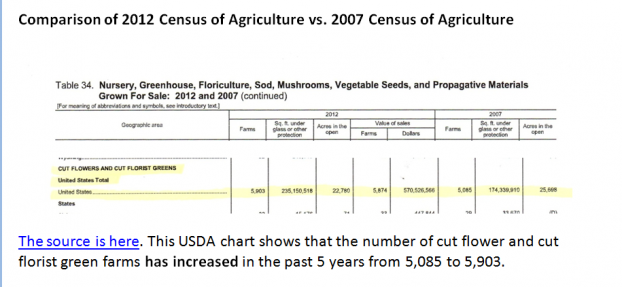The Slow Flowers Podcast is the award-winning show known as the “Voice of the Slow Flowers Movement.” Launched in 2013 as the original flower podcast, we’ve devoted more than 10 years to covering the business of flower farming, floral design, and the Slow Flowers sustainability ethos. Listen to a new episode each Wednesday, available for free download here at slowflowerspodcast.com or on iTunes, Spotify, and other podcast platforms.
April 19th, 2017
Podcast: Play in new window | Download
Subscribe: Apple Podcasts | Podcast Index | | More
Happy Spring!
I’m holding my breath, but I am hopeful that spring is truly here, aren’t you?
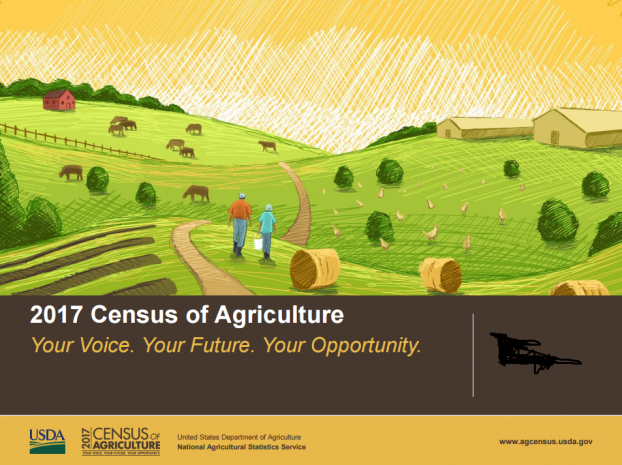 Before we get started, I want to share some very important news — especially for all the U.S. flower farmers listening. Every five years the USDA – that’s the US Department of Agriculture – conducts a Census, a complete count of farms and ranches, and the people who operate them, all across the country.
Before we get started, I want to share some very important news — especially for all the U.S. flower farmers listening. Every five years the USDA – that’s the US Department of Agriculture – conducts a Census, a complete count of farms and ranches, and the people who operate them, all across the country.
This year, 2017, is an Ag Census year. A lot has happened in flower farming since 2012 and I strongly believe that the Census metrics will reveal that.
For instance, we know from the 2007 and 2012 Census reports that U.S. farms representing flowers grew 16% as a crop category. To be specific, that’s a boost from 5,085 farms to 5,903 farms.
I am excited to see what the new 2017 Census reveals, but here’s where you come in. The folks at USDA work very hard to get the Census questionnaire to everyone in farming, but as you know, it’s easy for smaller or super busy farms to fall through the cracks. We cannot afford to have that happen, folks. The data reported will influence policy and funding for U.S. Agriculture and I believe that flower farms need to have a much larger piece of that pie, whether it’s through specialty crop block grants, value added producer grants or other programs that help support our industry.
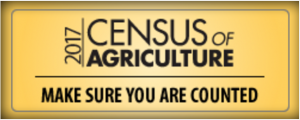 Producers who are new to farming or who did not receive a Census of Agriculture in 2012 still have time to sign up to receive the 2017 form by visiting www.agcensus.usda.gov and clicking on the ‘Make Sure You Are Counted’ button through June. USDA defines a farm as any place from which at least $1,000 of agricultural products were produced and sold, or normally would have been sold, during the census year — and that means unless you’re a hobby grower like me, you should be counted!
Producers who are new to farming or who did not receive a Census of Agriculture in 2012 still have time to sign up to receive the 2017 form by visiting www.agcensus.usda.gov and clicking on the ‘Make Sure You Are Counted’ button through June. USDA defines a farm as any place from which at least $1,000 of agricultural products were produced and sold, or normally would have been sold, during the census year — and that means unless you’re a hobby grower like me, you should be counted!
As I mentioned, the sign-up period ends June 30, 2017 — and all you have to do is follow the link and just sign up. By the end of the year, you will receive your questionnaire, which you can leisurely complete in the middle of winter! The new Census will be published in 2019 and of course, I will be here to share the highlights, hopefully with a guest from USDA to interpret it for us. THANKS so much for checking this out.
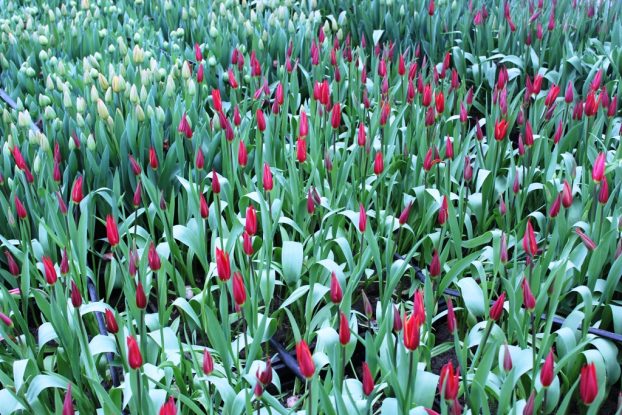
Stunning tulips. This variety is called ‘Alladin’, a lily-flowered tulip grown by Alm Hill Gardens in Everson, WA
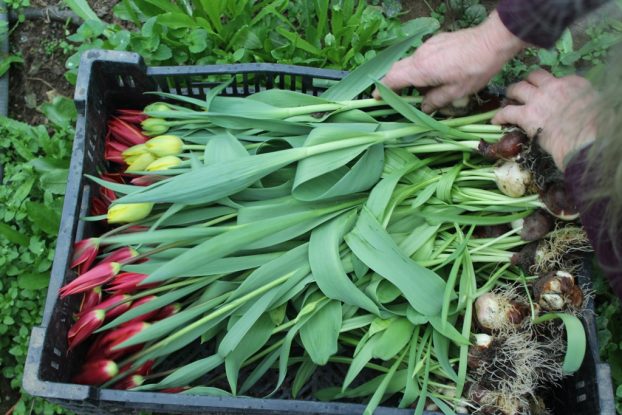
Crates filled with tulips on bulbs
This week, I’m sharing some audio that I recorded on a visit to Alm Hill Gardens. As I say in the title of this episode, Alm Hill is my favorite source for local tulips. I first met flower farmers Gretchen Hoyt and Ben Craft while working on The 50 Mile Bouquet and there is an interview with Gretchen in that book’s section called “Grower Wisdom,” with photographs by my collaborator David Perry.
If you have bought tulips at Seattle’s famed Pike Place Market, it’s probable that you purchased the vibrant, fresh and lovely sustainably-grown tulips from Alm Hill Gardens’ stalls. They are my go-to stop for when I need armloads of tulips for a workshop or demonstration. It just makes me so happy to support a local flower farm that brings its harvest direct to consumers. Established in 1974, Alm Hill Gardens is a small family farm specializing in quality. You can also find their flowers in Seattle at the University District Farmers Market, West Seattle Farmers Market and Ballard Farmers Market — all in Seattle.
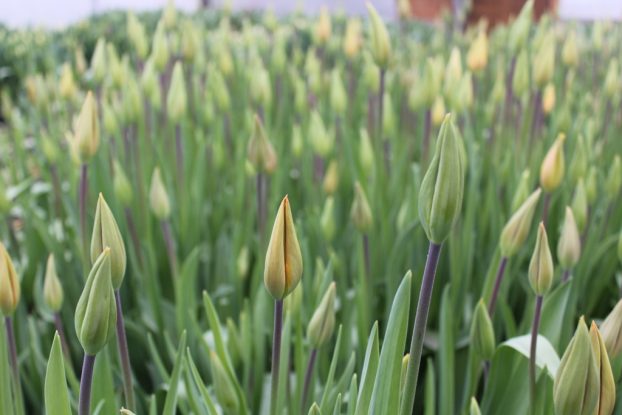
‘Temple’, a lovely slender tulip.
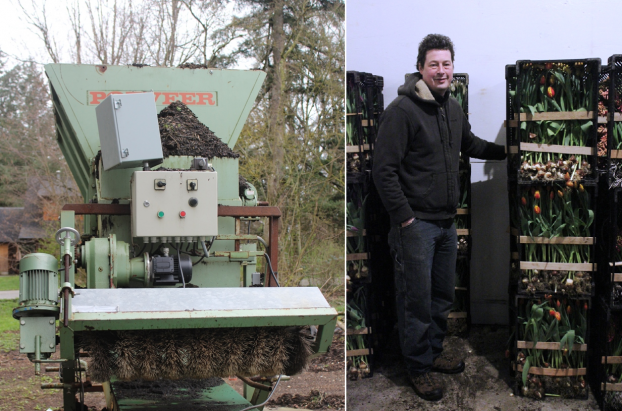
Here’s a little of what I wrote in The 50 Mile Bouquet:
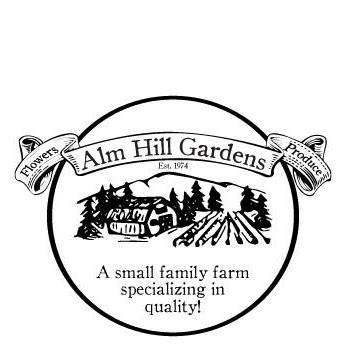 If you follow Gretchen Hoyt and her husband Ben Craft around for a season, you’ll gain a profound admiration for how their values, sustainable farming practices and sheer hard work produce something so ephemeral and delicate as a lilac, tulip, lily, anemone or peony.
If you follow Gretchen Hoyt and her husband Ben Craft around for a season, you’ll gain a profound admiration for how their values, sustainable farming practices and sheer hard work produce something so ephemeral and delicate as a lilac, tulip, lily, anemone or peony.
The couple overcame many obstacles to reach this moment: When they planted their first field of raspberries in rural Everson, Washington, just 2 miles from the Washington-British Columbia border, Gretchen was a single parent of two young children who had escaped from the city. Ben was a veteran of the war in Vietnam who wanted to unplug from society.
“Ben’s parents were dairy farmers. I never grew anything until I was 26 years old,” Gretchen says. “We had Ben’s dad’s tractor, no running water and no power, so we started with very little at the beginning.” Their efforts grew into one of the first year-round, direct-selling farms in Western Washington. Today, the 47-acre property contains six 30-by-100 foot greenhouses, countless high tunnels (hoop houses that can raise temperatures by 10 degrees), and fields of edible crops and, of course, flowers.
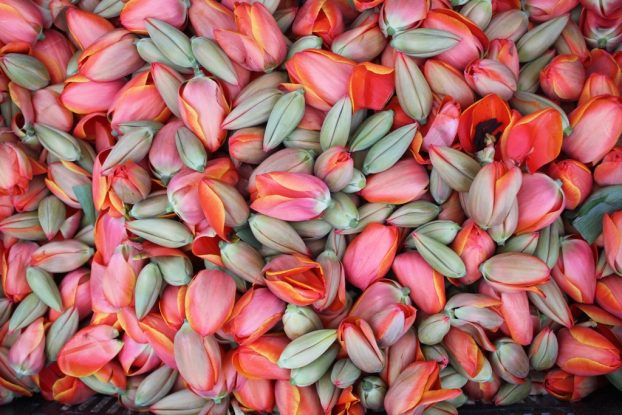
Even the spent heads are stunning!
Alm Hill Gardens is known for its luscious cut tulips, which account for 80 percent of their floral production. At Seattle’s Pike Place Market the sign reads: “Alm Hill Gardens: A Small Sustainable Family Farm Since 1974” and the stall overflows with irresistible blooms in a vibrant spectrum of hues to the delight of locals and tourist alike.
The longer-than-usual production season — from mid-Thanksgiving to May — is possible, thanks to many growing techniques perfected by the farm. These include planting already-chilled bulbs so they bloom by Christmas. It means sheltering thousands of hybrid tulips in greenhouses that elevate air and soil temperatures and protect stems from Pacific Northwest rainfall. The volume of flowers required to satisfy a bulb-crazed market is mind-boggling, requiring an intensive planting system. Bulbs are planted in 12-inch-high crates and stacked for weeks like building blocks in a large walk-in cooler before being moved to the greenhouses for early spring harvesting. “We have tulip crates stacked floor to ceiling,” Gretchen laughs.
Alm Hill sends an employee with carloads of tulips to Seattle’s Pike Place Market every week and also sells at several neighborhood farmers’ markets including the Bellingham Saturday market, which is closer to home. Depending on the season, these brilliant gems on plump green stems can sell from $20 to $30 for a bunch of 30. You can find the classic ovoid-shaped tulip, like the orange-and-purple streaked ‘Princess Irene’, or more unusual varieties, such as the parrot and French tulips.
Gretchen told me: “I knew I wanted to be a farmer when I finally grew a garden,. This is what I was supposed to do.”
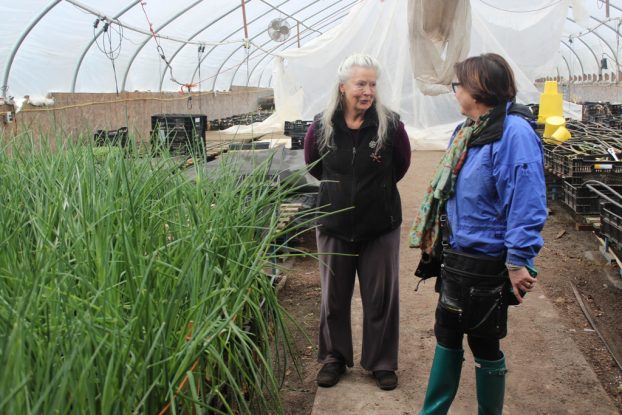
Gretchen Hoyt of Alm Hill Gardens (left) a veteran flower farmer. Lorene Edwards Forkner, editor of Pacific Horticulture magazine, right.
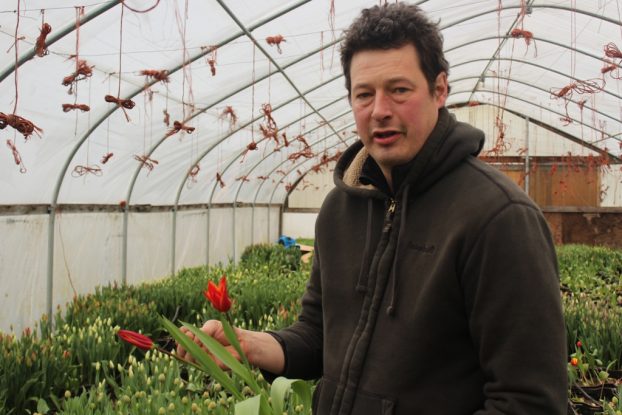
Joshua Craft led us through the high tunnels.
You will hear several voices on this episode, Gretchen Hoyt, her son-in-law and farming partner Joshua Craft, an experienced vegetable, grain and livestock farmer who is now deeply involved in Alm Hill Gardens, and of course, me. The fourth voice is my dear friend Lorene Edwards Forkner, editor of Pacific Horticulture, a fabulous quarterly journal that covers people and plants on the West Coast. Our day trip to Everson was so special.
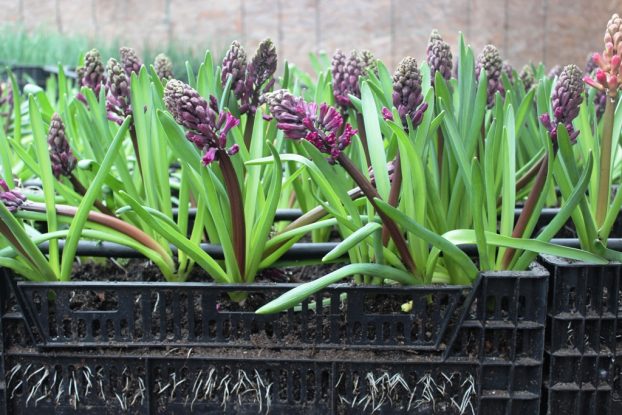
Super healthy, fragrant hyacinths grown in crates.
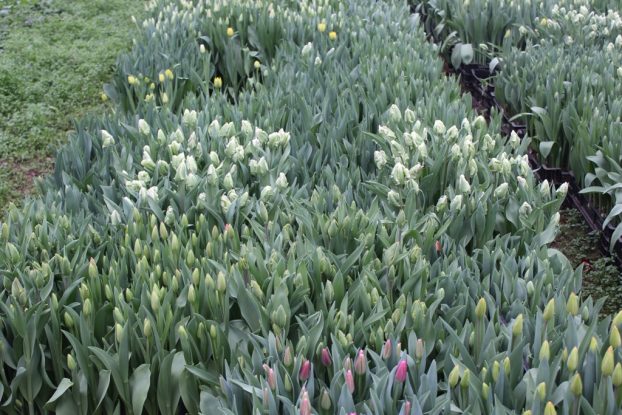
Here’s how to find Alm Hill at their social places:
Follow Alm Hill on Instagram
Find Alm Hill on Facebook
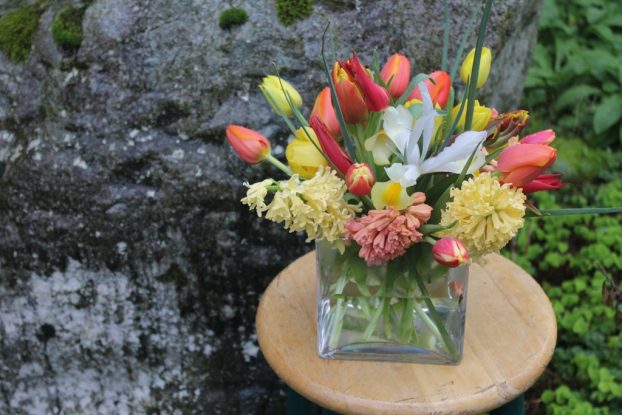
Lorene designed this on the spot to showcase irises, hyacinths and tulips, just-picked from Alm Hill Gardens.
The Slow Flowers Podcast has been downloaded more than 180,000 times by listeners like you. THANK YOU to each one of you for downloading, listening, commenting and sharing. It means so much.
If you value the content you receive each week, I invite you to show your thanks and support the Slow Flowers Podcast with a donation — the button can be found on our home page in the right column. Your contributions will help make it possible to transcribe future episodes of the Podcast.
Thank you to family of sponsors!
Thank you to our lead sponsor for 2017: Certified American Grown Flowers. The Certified American-Grown program and label provide a guarantee for designers and consumers on the source of their flowers. Take pride in your flowers and buy with confidence, ask for Certified American Grown Flowers. To learn more visit americangrownflowers.org.
Arctic Alaska Peonies, a cooperative of 50 family farms in the heart of Alaska providing high quality, American Grown peony flowers during the months of July and August. Visit them today at arcticalaskapeonies.com
Seattle Wholesale Growers Market, a farmer-owned cooperative committed to providing the very best the Pacific Northwest has to offer in cut flowers, foliage and plants. The Growers Market’s mission is to foster a vibrant marketplace that sustains local flower farms and provides top-quality products and service to the local floral industry. Find them at seattlewholesalegrowersmarket.com
Longfield Gardens provides home gardeners with high quality flower bulbs and perennials. Their online store offers plants for every region and every season, from tulips and daffodils to dahlias, caladiums and amaryllis. Visit them at lfgardens.com.
Association of Specialty Cut Flower Growers. Formed in 1988, ASCFG was created to educate, unite, and support commercial cut flower growers. It mission is to help growers produce high-quality floral material, and to foster and promote the local availability of that product. Learn more at ascfg.org.
I’m so excited to announce that Syndicate Sales has returned as a 2017 Slow Flowers sponsor! Syndicate Sales is an American manufacturer of vases and accessories for the professional florist. Look for the American Flag Icon to find Syndicate’s USA-made products and join the Syndicate Stars loyalty program at syndicatesales.com.
And drumroll, please, let’s welcome Johnny’s Selected Seeds as our newest sponsor. I can’t tell you how jazzed I am to partner with this employee-owned company that brings the best flower, herb and vegetable seeds — and supplies to farms large and small. Check them out at johnnysseeds.com.
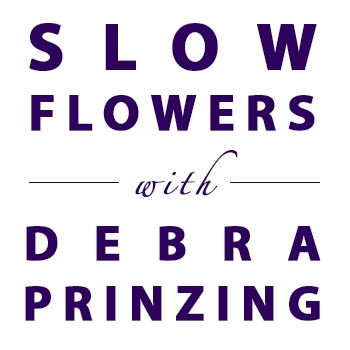 I’m Debra Prinzing, host and producer of the Slow Flowers Podcast. Next week, you’re invited to join me in putting more American grown flowers on the table, one vase at a time. And If you like what you hear, please consider logging onto Itunes and posting a listener review.
I’m Debra Prinzing, host and producer of the Slow Flowers Podcast. Next week, you’re invited to join me in putting more American grown flowers on the table, one vase at a time. And If you like what you hear, please consider logging onto Itunes and posting a listener review.
The content and opinions expressed here are either mine alone or those of my guests alone, independent of any podcast sponsor or other person, company or organization.
The Slow Flowers Podcast is engineered and edited by Andrew Brenlan. Learn more about his work at KineticTreeFitness.com.
Music credits:
Bending the Reed; Fudge
by Gillicuddy
Licensed under Attribution-NonCommercial 3.0 International License.
Posted in American Grown, Blog Posts, Flower Farming, General, Plants, Podcast Episodes, SLOW FLOWERS Podcast, Slowflowers.com the Directory of American Flowers | No Comments »
April 12th, 2017
Podcast: Play in new window | Download
Subscribe: Apple Podcasts | Podcast Index | | More
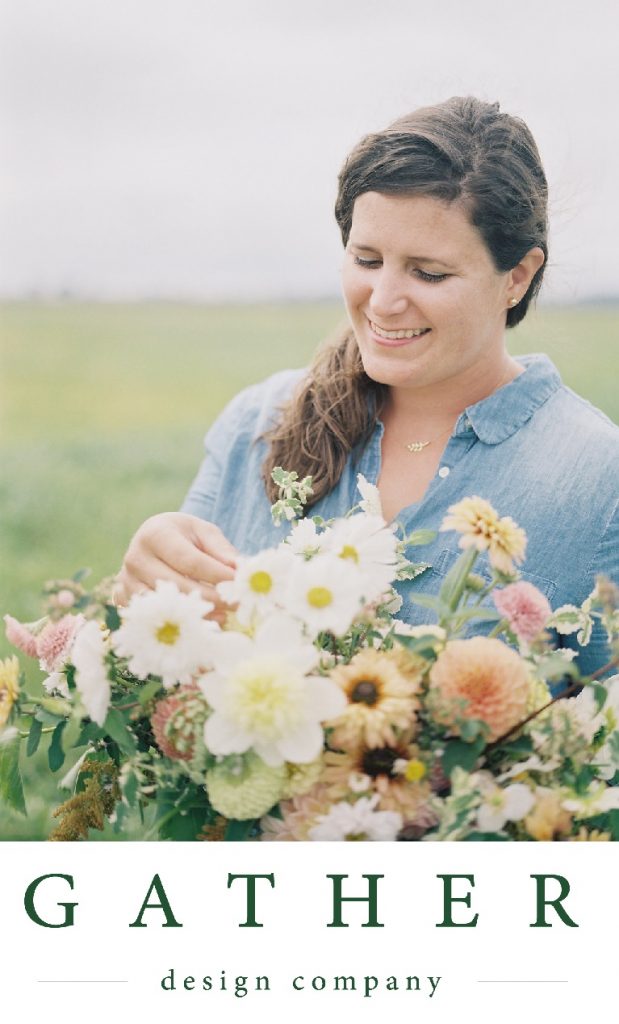
Amy Kunkel-Patterson of Gather Design Co. (c) Heather Payne Photography
I’m so pleased to introduce Amy Kunkel-Patterson of Seattle-based Gather Design Co. as this week’s Slow Flowers Podcast guest.
Before our main interview, I want to quickly share a conversation I recorded earlier this week with Alicia Schwede of the Flirty Fleurs Blog.
Like me, Alicia is a fellow marketing committee member at Seattle Wholesale Growers Market. We also collaborate with Longfield Gardens on education and promotion of gardening with the bulbs and flowers in their catalog. I was so impressed with the Flirty Fleurs tulip collection that Alicia “curated” for Longfield last year and I asked her about her process.
Be sure to check out images of Longfield’s spring-flowering bulbs, including Alicia’s collection — I’ve posted links at today’s show notes. Longfield has just opened up the online ordering for spring-flowering bulbs. Of course, that seems a little counterintuitive because you’ll be planting them in the fall, right? But some of the hottest varieties will go quickly, so it’s smart to shop now. Note: Longfield’s Tulip Shop will “open” in mid-April.

Alicia Schwede grew and designed with this alluring medly of red-and-white tulips (and companions like bleeding heart). The tulips are part of the Flirty Fleurs collection from Longfield Gardens.

Amy and I met in January 2016 when she participated in a master class with Lisa Waud of pot & box and Flower House Detroit. Lisa was hosted by the Seattle Wholesale Growers Market to teach a large-format installation course and I spent the day interviewing the participants and photographing the process. You can read about that workshop here and listen to the interviews.
Amy impressed me for many reasons, including her enthusiasm for collaboration and her story– she told me she was working full-time as a practicing attorney. And by coincidence, she was at a law firm I knew quite well, having been quite involved as the spouse of a law partner at that firm years ago.
We continued our conversation last summer when Amy volunteered to work with Alicia Schwede to produce her annual “dahlia wall” at SWGMC. Amy jumped in to help her produce it. I was there to film a time-lapse video of the installation and so, we had hours and hours to chat while working.
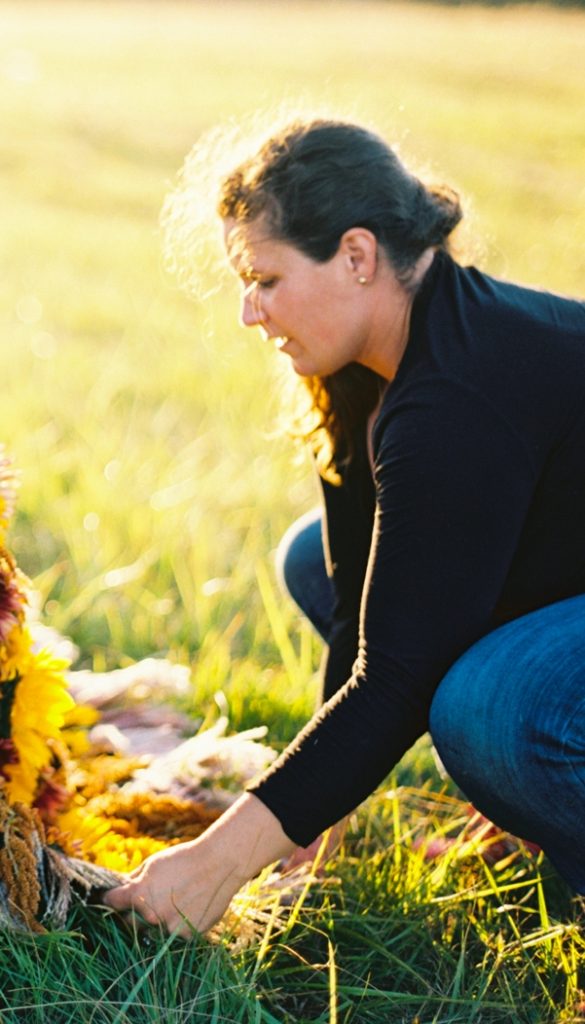
Sneak Peek: I took liberties of cropping just a detail of Anna Peters’ beautiful photograph of Amy Kunkel-Patterson at work on her Americana-themed sunflower gown.
I had just finished up American Flowers Week 2016 and was already scheming what I hoped to achieve for American Flowers Week 2017.
I mentioned wanting to produce several floral-inspired fashion shoots with iconic American flowers like sunflowers, roses, peonies, dahlias and other flowers. Amy spontaneously said: “I’ll make one for you!”
That simple response led to what turned out to be the most amazing design — a high-fashion gown created with a host of flowers supplied by Seattle Wholesale Growers Market.
Amy created something truly beautiful for American Flowers Week 2017 and it has been so hard for all of us involved to sit tight and keep the photography under wraps until we kick off the American Flowers Week campaign.
So you’ll hear us talk about this project a bit — and I promise you will be blown away when we begin to unveil the images, and floral fashions I’ve commissioned from other teams around the country — leading up to June 28 to July 4th.
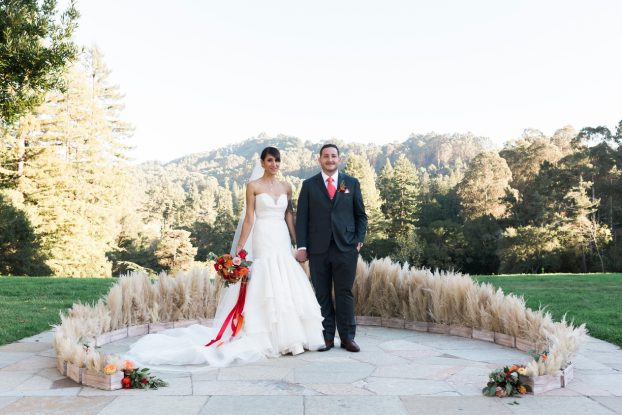
Here’s the Berkeley wedding we discussed, in which Amy used pampas grass to create a ceremony circle. All photos, courtesy Gather Design Co.
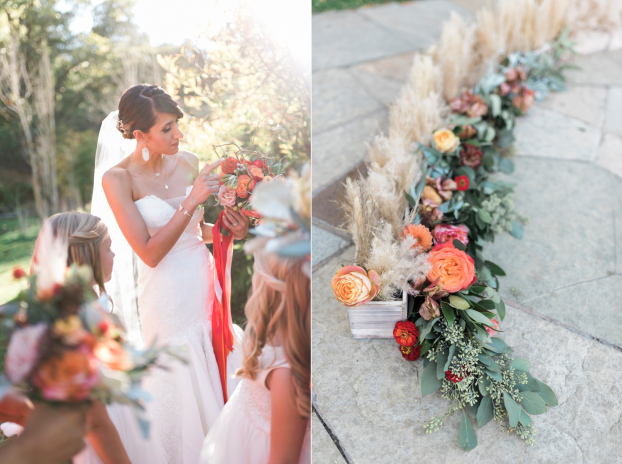
More lovely details from the same wedding.
So, let’s meet Amy. Here is her introduction from the Gather Design Co. web site:
I’m Amy; welcome. My love for flowers runs deep and true. I grew up ‘helping’ in my mom’s, grandfather’s and great-grandfather’s gardens, learning how to grow flowers, and more importantly, how to pick and arrange them.

Charming and playful!
This is where the name Gather comes from – I’ve always been good at what my family broadly terms “hunting and gathering.” I was the kid who couldn’t ever pull myself out of the blackberry patch where I wanted to pick just one more berry, or away from the beach where I spent hours collecting the tiniest, wave-polished pebbles which I called jewels.
On a trip through Europe, I managed to gather upwards of 40 pounds of rocks, each special in my mind, from beaches my husband and I walked.
I take the same tireless care in gathering vintage vases for my collection and seeking out the most luscious seasonal blooms for my clients.
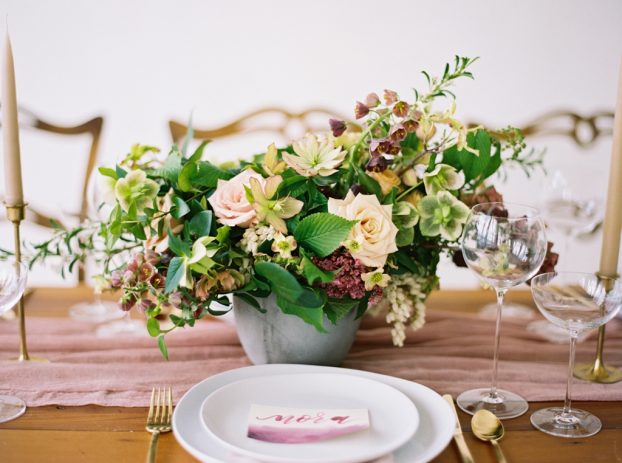
Beautiful spring wedding flowers.
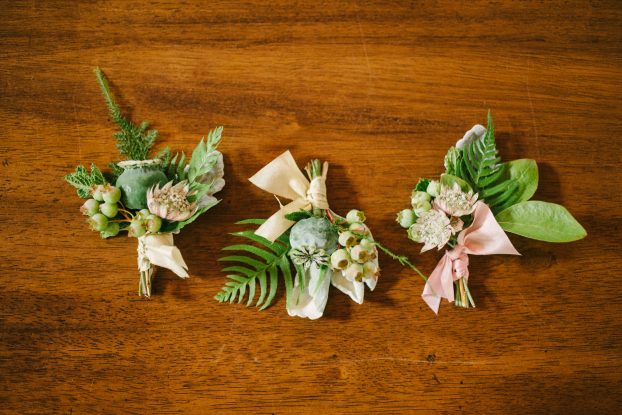
Tiny details for sweet boutonnieres.
Gathering also sparked the event design side of Gather, as I love to start with an idea – color, texture, an heirloom treasure – and spin it into an entire experience, gathering context and detail along the way.
I believe in letting flowers shine as they do in nature. I let each stem dance and delight in their own loveliness, highlighted and supported by every other bit of foliage and flowers in an arrangement. My designs are at once unique and timeless, romantic and whimsical, pensive and wild. I strive to learn about and befriend each of my couples, noting the blooms that bring them joy and the colors that inspire them, so that their flowers embody the essence of who they are.
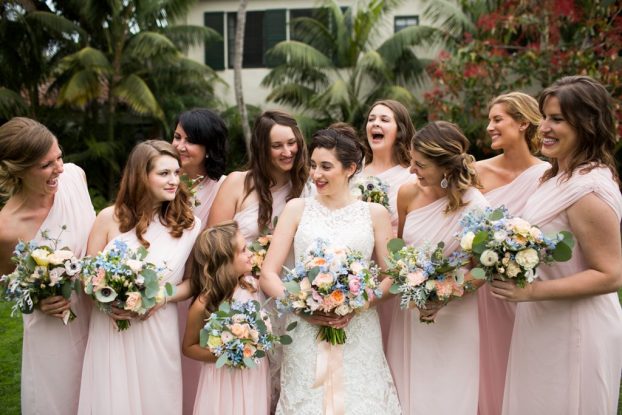
The alluring floral palette uses touches of blue to add depth and dimension.
I purchase from local farmers whenever possible and source safely and sustainably-grown flowers. I seek out rare and interesting blooms, foliage, berries, seedpods, and other elements to incorporate the season, the place, and the people into each bouquet or arrangement.
Always hungry for the next adventure, I’ve also started hand-dying cotton and silks for table runners, ribbons, and styling pieces.

Romantic, soft, wild — and gathered bouquets, by Amy Kunkel-Patterson
Find Amy at these social places and follow along on her creative journey:
Gather Design Co. on Facebook
Gather Design Co. on Instagram
 The Slow Flowers Podcast has been downloaded more than 177,000 times by listeners like you. THANK YOU to each one of you for downloading, listening, commenting and sharing. It means so much.
The Slow Flowers Podcast has been downloaded more than 177,000 times by listeners like you. THANK YOU to each one of you for downloading, listening, commenting and sharing. It means so much.
If you value the content you receive each week, I invite you to show your thanks and support the Slow Flowers Podcast with a donation — the button can be found on our home page in the right column. Your contributions will help make it possible to transcribe future episodes of the Podcast.
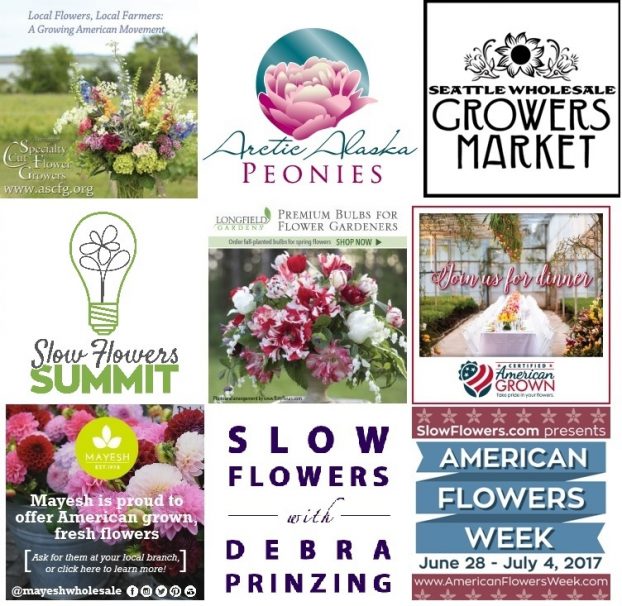 Thank you to our garden of Slow Flowers Sponsors
Thank you to our garden of Slow Flowers Sponsors
Arctic Alaska Peonies, a cooperative of 50 family farms in the heart of Alaska providing high quality, American Grown peony flowers during the months of July and August. Visit them today at arcticalaskapeonies.com
Seattle Wholesale Growers Market, a farmer-owned cooperative committed to providing the very best the Pacific Northwest has to offer in cut flowers, foliage and plants. The Growers Market’s mission is to foster a vibrant marketplace that sustains local flower farms and provides top-quality products and service to the local floral industry. Find them at seattlewholesalegrowersmarket.com
Longfield Gardens provides home gardeners with high quality flower bulbs and perennials. Their online store offers plants for every region and every season, from tulips and daffodils to dahlias, caladiums and amaryllis. Visit them at lfgardens.com.
Association of Specialty Cut Flower Growers. Formed in 1988, ASCFG was created to educate, unite, and support commercial cut flower growers. It mission is to help growers produce high-quality floral material, and to foster and promote the local availability of that product. Learn more at ascfg.org
I’m Debra Prinzing, host and producer of the Slow Flowers Podcast. Next week, you’re invited to join me in putting more American grown flowers on the table, one vase at a time. And If you like what you hear, please consider logging onto Itunes and posting a listener review.
The content and opinions expressed here are either mine alone or those of my guests alone, independent of any podcast sponsor or other person, company or organization.
The Slow Flowers Podcast is engineered and edited by Andrew Brenlan. Learn more about his work at KineticTreeFitness.com.
Music credits:
A Path Unwinding; Brass Buttons; Night Light
by Blue Dot Sessions
Posted in American Flowers Week, American Grown, Blog Posts, Creativity, floral design, General, Playfulness, Podcast Episodes, SLOW FLOWERS Podcast, Slowflowers.com the Directory of American Flowers | No Comments »
April 5th, 2017
Podcast: Play in new window | Download
Subscribe: Apple Podcasts | Podcast Index | | More
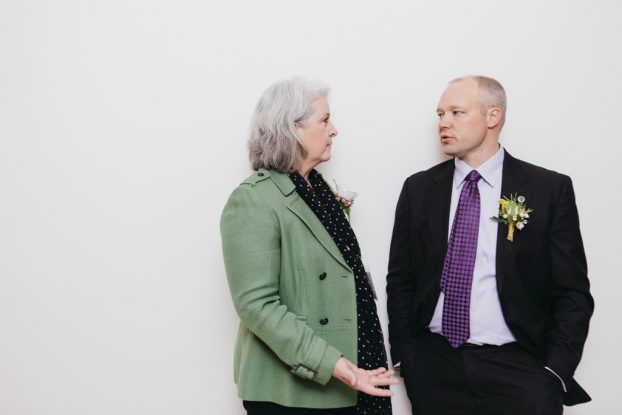
I’ve asked Kasey Cronquist to update us on the current policy landscape as it relates to flower farming, with details from the recent Flower Farmer Fly-In efforts.
You’ve heard me discuss my past trips to Washington, D.C., to join a group of flower farmers on the annual “fly in” to reach out to policymakers on Capitol Hill and at agencies like the USDA. Some exciting things have taken place, including (for me), meeting one of my two senators, Senator Patty Murray.
I’ve also had the privilege to speak at briefings about cut flowers, including one at the launch of the Congressional Cut Flower Caucus, along with former Representative Lois Capps and Rep. Duncan Hunter.
So do those efforts really matter? Today’s guest, Kasey Cronquist, spends a lot of his energy at the vortex of this question and I know he would argue, YES, these efforts matter more than ever.
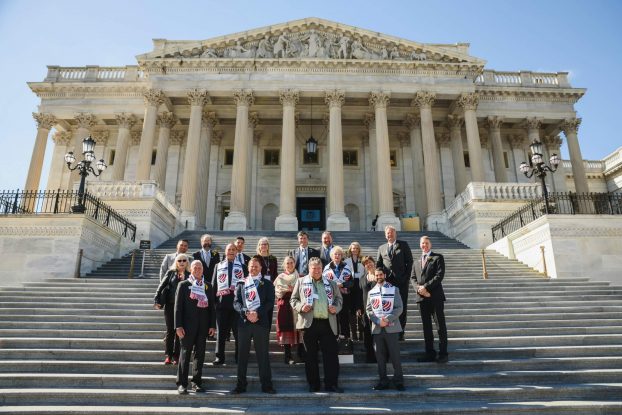 Kasey is the CEO of the California Cut Flower Commission, a position he’s held for nine years. He was in that position the first time I cold-called him back in 2010 for an organic flowers article I was reporting on for the Los Angeles Times. Since then, we’ve spent hours discussing the American grown flower landscape, both for my own articles and blog posts, but also for this podcast and Kasey’s own blog and writings.
Kasey is the CEO of the California Cut Flower Commission, a position he’s held for nine years. He was in that position the first time I cold-called him back in 2010 for an organic flowers article I was reporting on for the Los Angeles Times. Since then, we’ve spent hours discussing the American grown flower landscape, both for my own articles and blog posts, but also for this podcast and Kasey’s own blog and writings.
When Kasey threw out the seed of an idea that a national effort to promote domestic and local flowers could take place, I was there. It was at a working group that met prior to the 2012 Association of Specialty Cut Flower Growers conference in Tacoma.
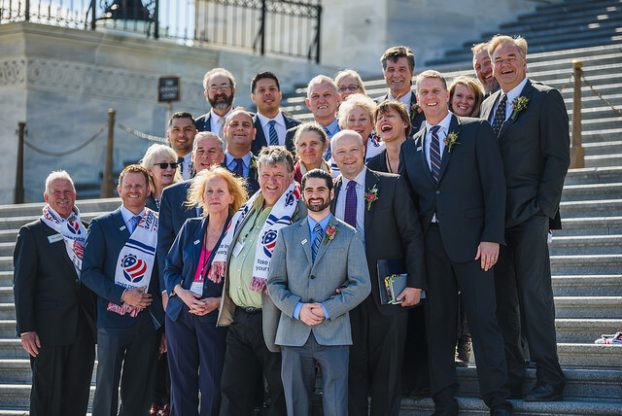 Over the following year, I participating with him and others to formulate the grassroots organization that became Certified American Grown. I remember spending an entire Sunday in 2013, sitting at Diane Szukovathy of Jello Mold Farm’s kitchen table, as we sketched out our vision for the language that would eventually be used to solicit involvement for the Certified program. The following year, in 2014, the program was launched and when the advisory council was formed, I was asked to join as the non-farmer consumer representative.
Over the following year, I participating with him and others to formulate the grassroots organization that became Certified American Grown. I remember spending an entire Sunday in 2013, sitting at Diane Szukovathy of Jello Mold Farm’s kitchen table, as we sketched out our vision for the language that would eventually be used to solicit involvement for the Certified program. The following year, in 2014, the program was launched and when the advisory council was formed, I was asked to join as the non-farmer consumer representative.
Suffice it to say that Kasey was the engine that drove this train to where it is today. Certified American Grown produces the Field to Vase Dinners, now in year three; it has supplied flowers for the past three “Dream Weddings” by The Knot; it has been instrumental in all advocacy efforts to see the past and current White House use American-grown flowers; and it has flowered the First Lady’s Luncheon with all American-grown flowers, among so many other projects.
In his role as administrator for the Certified American Grown program, Kasey led the recent “fly in” with the largest group of flower farmers to date. I missed the trip this year, but I’ve heard that some incredible strides were made with the Congressional Cut Flower Caucus and more, so I asked Kasey to share an update here.
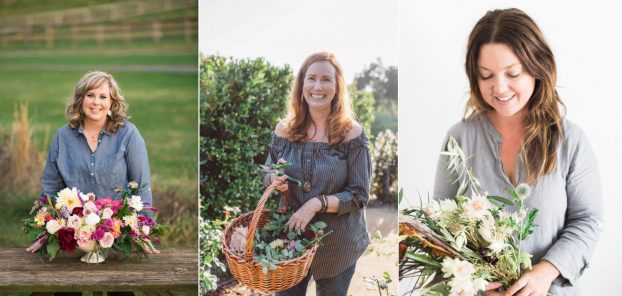
Kelly Shore, Margaret Lloyd and Christy Hulsey, the dream team of floral designers who will produce the First Lady’s Luncheon florals using all American-grown botanicals.
But I’m very excited that the next big item to celebrate will be the First Lady’s Luncheon, a bipartisan, non-taxpayer-funded annual charity event that will feature American Grown Flowers, designed by Kelly Shore, Margaret Lloyd and Christy Hulsey — all three are members of both Slow Flowers and the Chapel Designers, and I know they will do something brilliant in early May — watch their feeds to follow along. Here’s the recent announcement:
An annual tradition since 1912, the luncheon is put on by The Congressional Club and attended by nearly 1,400 people. The Congressional Club is an organization representing the spouses of members of Congress, cabinet members and the Supreme Court.
Last year, Certified American Grown Flowers for the 160 centerpieces at the event came from California, Oregon, Washington, Florida and Virginia.
The design team is currently working with the Congressional Club’s luncheon committee on selecting the American Grown Flowers that will be used and working with farms who will be able supply those flowers in early May.
“We have a great team coming together to help make this year’s First Lady’s Luncheon another beautiful success,” explained Certified American Grown Administrator Kasey Cronquist. “We appreciate the Congressional Club’s commitment to source all American Grown Flowers for this wonderful tradition.”
Here are ways you can follow and find Kasey Cronquist and his many projects:
Subscribe to announcements from Certified American Grown.
Subscribe to Kasey’s blog updates #OriginMatters
Follow American Grown Flowers on Instagram
Learn more about the Congressional Cut Flowers Caucus
Listen to Episode 235, my interview with Bill Frymoyer, the key D.C. player who advocates for domestic flower issues.
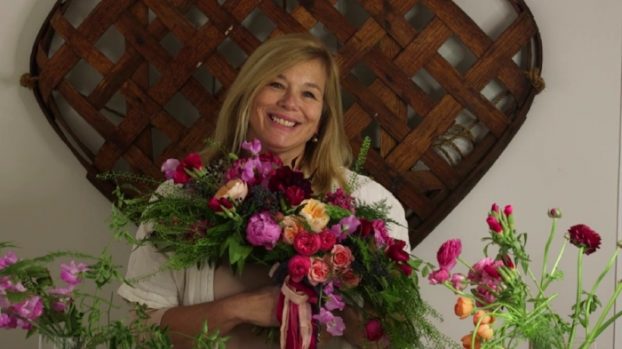
Holly Heider Chapple
Next up, a quick conversation with Holly Heider Chapple. About a month ago, Susan McLeary of Passionflower Events, a past guest of this podcast, sent me an email out of the blue. It went like this:
I just had to write to tell you about something that Holly Chapple’s got going on…
She’s released a video tutorial on a chicken wire mechanic that she’s developed.
Of course, chicken wire is NOT new, and most florists are very familiar with it, but it’s the way that she’s using it that I believe is incredibly game-changing.
We all know how to make a ball of it, and stuff it into a low container. This is widely done, and results in a stable, transportable arrangement.
The game-changing bit is she’s developed a way to make elevated arrangements using wire that results in very large, stable, light, transportable arrangements that do not require foam.
In all my days, I haven’t seen any others do this, and honestly, large elevated arrangements are typically designed with large chunks of foam- even by those of us who want to eliminate it’s usage.
It just wasn’t practical to design big daddy elevated pieces on site, or in water. It was hard to achieve a large, airy result, hard to transport them, time consuming, etc….
I really feel that the floral community would gain so much by knowing this, but not sure how to get the word out.
I thought I’d reach out to you- in case you didn’t already know this is going on…I really believe this can change the way florists design, and dramatically reduce foam usage!
In Holly’s video course, she also shows how to make a cascade bouquet without a foam holder, and a new take on designing low pieces with wire.
Holly used to produce massive events, using tons of foam each year, and she has turned this around completely- think of the ripple this could have!! Ok! I hope you find this helpful. I just think it’s incredible.
I thoroughly respect Susan’s advice and so when I had a chance to speak with Holly about the new video course, I asked if she would be willing to let me preview it to share my thoughts with you.
Holly’s new video course teaches her foam-free method of designing cascading bouquets and large-scale elevated arrangements. See the sneak peek above.
In the nearly one-hour long video tutorial, called Creating “Hollyish” Floral Designs Holly demonstrates how she creates her ‘Hollyish’ bouquets.
From wiring stems and flower placement in the signature Holly Heider Chapple Egg mechanic to finishing with the perfect ribbon wrap, you’ll learn to create a garden style bouquet that will delight your clients. Holly also shares her innovation for creating foam-free elevated and compote designs.
The course is available in English only. (Content is available online only and cannot be downloaded.) The price for the course is $189.00. Congratulations on bringing this idea to the floral world, Holly!
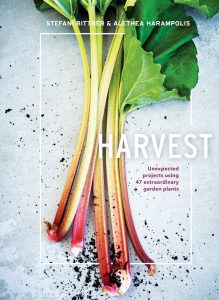 And thank you for joining me today. This week, we drew names for those who entered our drawing for two copies of HARVEST, the beautiful and informative book by recent Podcast guests, Stefani Bittner and Alethea Harampolis of the Homestead Design Collective.
And thank you for joining me today. This week, we drew names for those who entered our drawing for two copies of HARVEST, the beautiful and informative book by recent Podcast guests, Stefani Bittner and Alethea Harampolis of the Homestead Design Collective.
We asked listeners to post about their most useful garden plant in the comment section at debraprinzing.com.
From those who took the time to comment, we’ve randomly selected two lucky winners:
Hannah Morgan of Fortunate Orchard, based in Seattle; and listener Ashley Kirnan. Congratulations, Hannah and Ashley and thank you to Ten Speed Press for the donation!
Ladies, your books will be in the mail soon!
 The Slow Flowers Podcast has been downloaded more than 175,000 times by listeners like you. In fact, we ended the month of March 2017 with more than 11,000 downloads — the all-time highest monthly listenership ever. THANK YOU to each one of you for downloading, listening, commenting and sharing. It means so much.
The Slow Flowers Podcast has been downloaded more than 175,000 times by listeners like you. In fact, we ended the month of March 2017 with more than 11,000 downloads — the all-time highest monthly listenership ever. THANK YOU to each one of you for downloading, listening, commenting and sharing. It means so much.
If you value the content you receive each week, I invite you to show your thanks and support the Slow Flowers Podcast with a donation — the button can be found on our home page in the right column. Your contributions will help make it possible to transcribe future episodes of the Podcast.
 This podcast is brought to you by Slowflowers.com, the free, nationwide online directory to florists, shops, and studios who design with American-grown flowers and to the farms that grow those blooms. It’s the conscious choice for buying and sending flowers.
This podcast is brought to you by Slowflowers.com, the free, nationwide online directory to florists, shops, and studios who design with American-grown flowers and to the farms that grow those blooms. It’s the conscious choice for buying and sending flowers.
And thank you to our lead sponsor for 2017: Certified American Grown Flowers. The Certified American-Grown program and label provide a guarantee for designers and consumers on the source of their flowers. Take pride in your flowers and buy with confidence, ask for Certified American Grown Flowers. To learn more visit americangrownflowers.org.
Thank you to Arctic Alaska Peonies, for supporting Slow Flowers. Arctic Alaska Peonies is a cooperative of 50 family farms in the heart of Alaska providing high quality, American Grown peony flowers during the months of July and August. Visit them at arcticalaskapeonies.com
Thank you to our wonderful friends at the Seattle Wholesale Growers Market, a farmer-owned cooperative committed to providing the very best the Pacific Northwest has to offer in cut flowers, foliage and plants. The Growers Market’s mission is to foster a vibrant marketplace that sustains local flower farms and provides top-quality products and service to the local floral industry. Find them at seattlewholesalegrowersmarket.com
Thank you to the passionate plantspeople at Longfield Gardens. Longfield Gardens provides home gardeners with high quality flower bulbs and perennials. Their online store offers plants for every region and every season, from tulips and daffodils to dahlias, caladiums and amaryllis. Visit them at lfgardens.com.
And thank you Association of Specialty Cut Flower Growers. Formed in 1988, ASCFG was created to educate, unite, and support commercial cut flower growers. It mission is to help growers produce high-quality floral material, and to foster and promote the local availability of that product. Learn more at ascfg.org.
I’m Debra Prinzing, host and producer of the Slow Flowers Podcast. Next week, you’re invited to join me in putting more American grown flowers on the table, one vase at a time. And If you like what you hear, please consider logging onto Itunes and posting a listener review.
The content and opinions expressed here are either mine alone or those of my guests alone, independent of any podcast sponsor or other person, company or organization.
The Slow Flowers Podcast is engineered and edited by Andrew Brenlan. Learn more about his work at KineticTreeFitness.com.
Music credits:
Flagger; Lahaina
by Blue Dot Sessions
Posted in American Grown, Blog Posts, Creativity, floral design, Flower Farming, Podcast Episodes, SLOW FLOWERS Podcast, Slowflowers.com the Directory of American Flowers | 2 Comments »
March 29th, 2017
Podcast: Play in new window | Download
Subscribe: Apple Podcasts | Podcast Index | | More
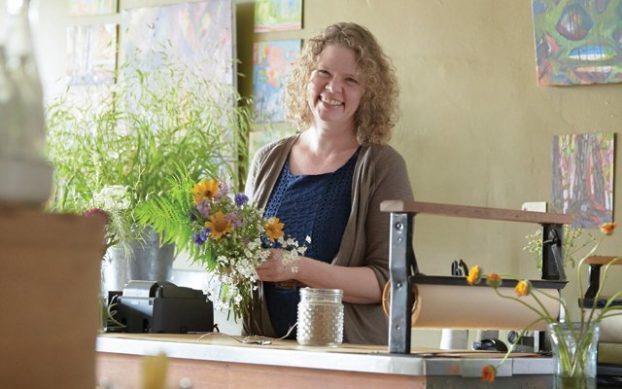
Christine Hoffman, of Foxglove, based in St. Paul, Minnesota. Christine is launching the new Twin Cities Flower Exchange [photo by Mpls. St. Paul Magazine]
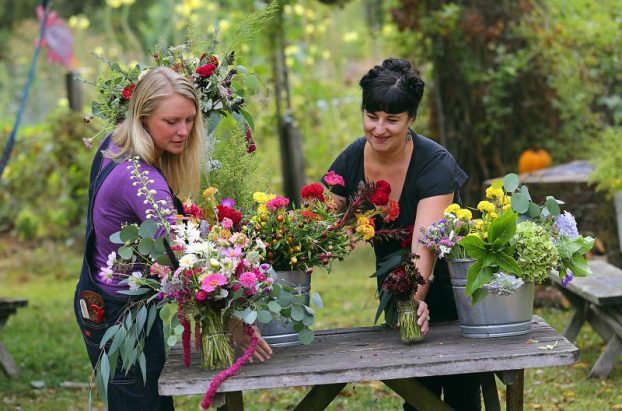
Nichole Skalski (right) of Sonoma Flower Mart, with Hedda Brorstrom of Full Bloom Farm, one of her primary flower suppliers [photo by The Press Democrat]
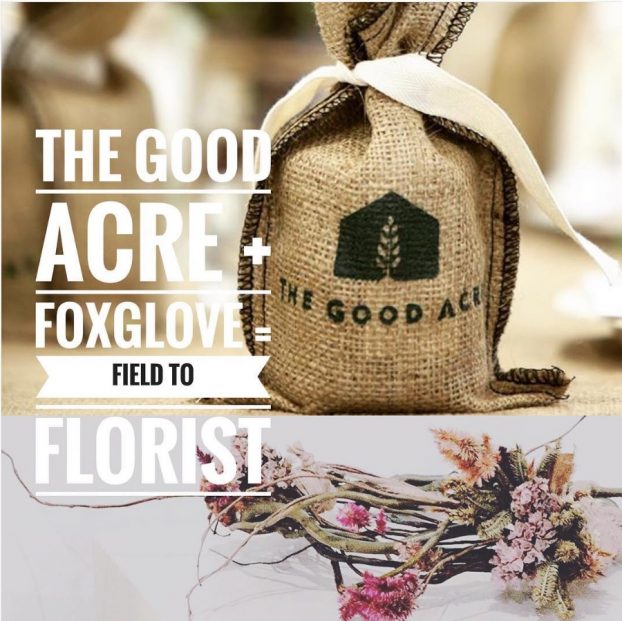
Good news for farmers and florists in the Twin Cities!
I’m so happy today to focus our attention on what’s happening in the Slow Flowers world of floral wholesale.
I’ve heard from a number of you around the U.S. who are in various stages of exploration, evaluation or actual planning to create a hub around local flowers in your marketplace.
Yet it’s easier said than done and there are several models to consider. There is the Seattle Wholesale Growers Market example — a true producers’ cooperative with the straightforward motto: farm to florist.
And there are groups of farmers who join together to sell collectively, such as Fair Field Flowers in the Milwaukie-Madison, Wisconsin area, which has a farmer-fun shared sales & delivery service.
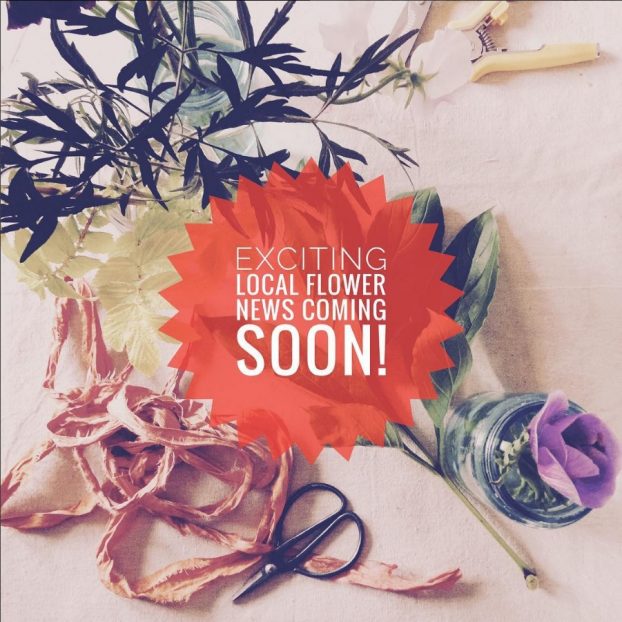
Teasing Foxglove’s Instagram followers with a promise of local flower news!
Today’s two guests and their businesses are based on a single ownership or partnership that operates for the good of the community, but these are certainly not co-ops.
You’ll hear from Christine Hoffman, founder of the new Twin Cities Flower Exchange, based in St. Paul, Minnesota, and from Nichole Skalski, partner in Sonoma Flower Mart, based in Sebastopol, California. Both are past guests of this podcast and both have updates to share.
First up, I’m excited to reintroduce you to Christine Hoffman, owner of Foxglove, a floral design studio that evolved from her successful retail store Foxglove Marketplace. Christine was a guest of this podcast about two years ago when I visited her in St. Paul after being part of Minneapolis Institute of Art’s Art in Bloom program.
Since closing her retail store, Christine has continued to design and teach. Her website sums up her philosophy beautifully. She writes:
As the Twin Cities first exclusively local and chemical-free florist, Foxglove is more than just a flower studio. I am a slow flowers advocate striving to form a strong community of sustainable flower farmers, small business owners, and folks who care about supporting these mindful endeavors. By providing a local, sustainable option to traditional flowers, putting a premium on collaboration, and reaching out to the community, I hope to foster change.
Hear from Christine about her new venture, which will bring regional flowers to Twin Cities Flower Exchange every week . . . housed at The Good Acre, a nonprofit organic food hub that incubates local food businesses — and NOW, local flowers! Watch Christine’s social feeds for images of opening day, June 7th.
Here’s how to follow along on her journey.
Find Foxglove/Twin Cities Flower Exchange on Facebook
Follow Foxglove/Twin Cities Flower Exchange on Instagram
Discover Foxglove/Twin Cities Flower Exchange on Pinterest
Check out Foxglove/Twin Cities Flower Exchange on Twitter
READ MORE…
Posted in American Grown, Blog Posts, Creativity, floral design, Flower Farming, Podcast Episodes, SLOW FLOWERS Podcast, Slowflowers.com the Directory of American Flowers | 5 Comments »
March 22nd, 2017
Podcast: Play in new window | Download
Subscribe: Apple Podcasts | Podcast Index | | More
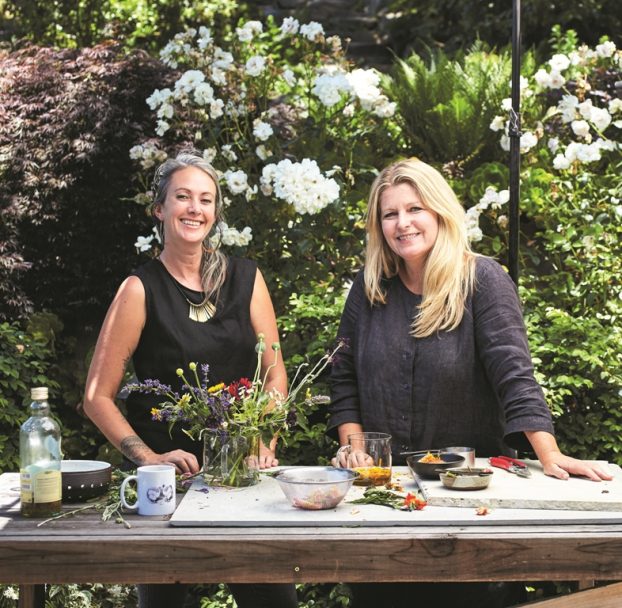
Alethea Harampolis (L), Stefani Bittner (R) – photo by David Fenton
One of the best things about being a veteran garden writer are the friendships I’ve forged over the years with my peers.
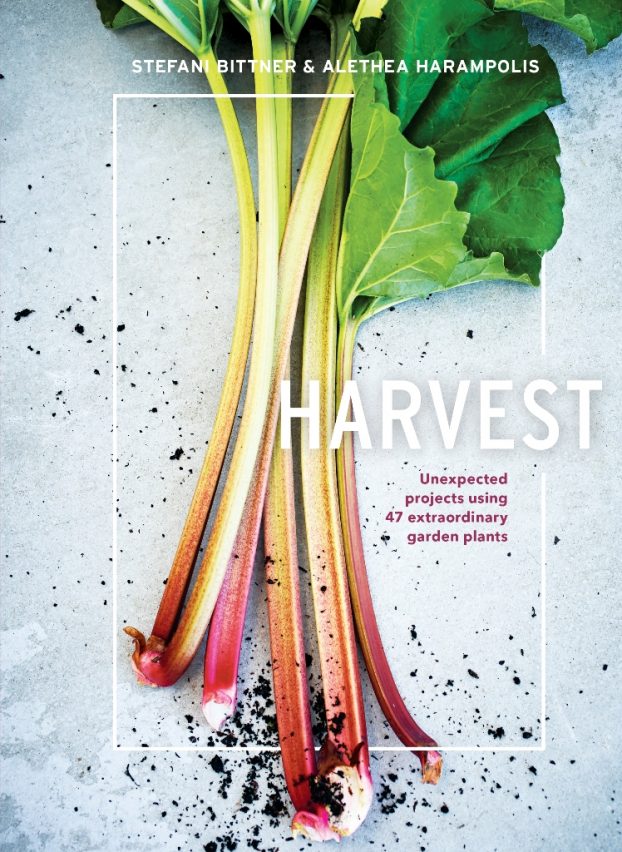 Today’s guests are definitely in that category of favorite professional friends who have become so much more than mere acquantances.
Today’s guests are definitely in that category of favorite professional friends who have become so much more than mere acquantances.
I really value my time with them, although sadly, it’s rare. Stefani Bittner and Alethea Harampolis are partners in Homestead Design Collective, a Bay Area-based landscape design firm.
Stefani is the coauthor with Leslie Bennett of The Beautiful Edible Garden and Alethea is cofounder of Studio Choo, with Jill Rizzo, her coauthor for The Flower Recipe Book and The Wreath Recipe Book. Alethea and Jill are past guests of this podcast, and you can find that episode here.
Since these creatives teamed up to form Homestead Design Collective, they have focused their business on landscapes that are useful and most important, can be harvested year round.
The title of their new book, HARVEST, says it all. I’m so honored that they asked me to write the foreword. In those few hundred words that appear in the opening pages of Harvest, I wrote this:
I once believed that clipping branches and blooms to bring indoors was akin to denuding my garden. But about ten years ago, I began to interview America’s flower farmers and their customers: floral designers devoted to and creatively fueled by domestic and local botanicals. Mesmerized by their uncommon floral crops, I began to regard the incredible beauty of my own backyard for all of its potential. That meant enjoying not just the small quantity of food (berries, herbs and vegetables) that my kitchen garden produced, but appreciating its abundance by displaying garden greenery and flowers in my vases.
This new-old philosophy of living with my garden’s generous harvest is best learned from true practitioners, such as Stefani Bittner and Alethea Harampolis of Homestead Design Collective. These women are also proponents of good design, and they adhere to the guiding philosophy of choosing plants at once both ornamental and useful. Although not farms by any means, our urban and suburban backyards should be used in their entirety, say Stefani and Alethea. The culinary world has its own “nose to tail” way of eating; HARVEST, the book you hold in your hands, introduces the gardener’s version of that idea: call it a “fruit-to-root” way of growing, with an appreciation for all parts of the plant, from the first tender shoots in spring to the pods and hips of late fall.
I’ve learned so much from these two pioneers. Stefani is a role model for landscape designers, inspiring her harvest-minded clients to turn their once-unproductive yards into prolific (and lovely) sources of edible bounty. Alethea is a role model among the farmer-florist crowd, blending edibles with ornamentals; aromatics with the wild-foraged; house plants with weeds — all to create dramatic, moody, seasonal florals for everyday decor and magnificent occasions.
In HARVEST, they celebrate the Slow Food movement on a highly personal scale, integrated with a Slow Flowers ethos. When edibles meet botanicals, we live intentionally with plants throughout the seasons. And when you embrace this practice, you will be richly reward by your garden.

Lilac Flower Cream
LILAC FLOWER CREAM
An ancient French technique, enfleurage is the process of extracting a flower’s perfume into odorless animal or vegetable fat. The process used here is a simple method that will capture the fragrance of spring in a jar. The cream can be used directly on your skin or to flavor favorite sweet dishes. It is best to use the lilac’s tiny blooms straight from the shrub, picking them in the morning when they are the most fragrant.
MAKES TWO 16-OUNCE JARS
32 ounces extra-virgin coconut oil
10 cups lilac blooms picked from the heads in 2 cup increments as needed
Pick 2 cups of lilac blooms. Place the coconut oil in a small saucepan and melt over low heat until it is completely liquefied. Pour the liquid into a 10 by 10-inch (25 by 25-cm) casserole dish and allow it to harden. After the oil has hardened, score it with a butter knife. This will help the scent of the flowers penetrate it more deeply. Layer the tiny lilac blooms onto the oil, covering it with 2 inches (5 cm) of blooms. Place a second 10 by 10-inch (25 by 25-cm) casserole dish upside down atop of the first one. Use electrical tape to seal the two dish edges tightly, and place the dishes in a dark area.
After 48 hours, remove the tape seal and discard the spent blooms. Pick another 2 cups of lilacs, add another 2 inches (5 cm) of flower blooms to the oil, and seal again for another 48 hours. Repeat this process three more times, for a total of five cycles with fresh blooms each time.
Scrape up the oil from the casserole dish, place it into two 16-ounce jars, and seal the lids. Store in a cool, dark place; the flower cream will keep for up to 3 years.
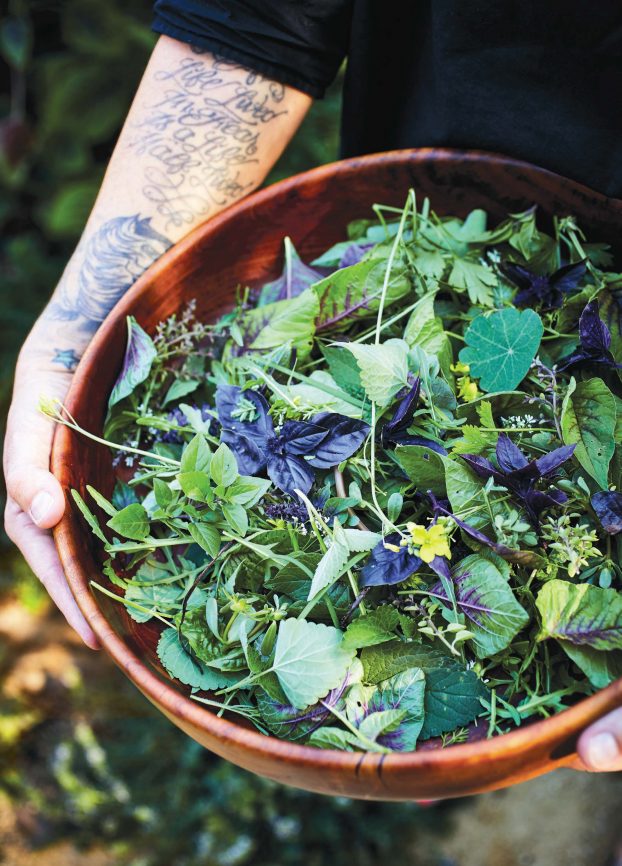
Midseason Herb Salad, from HARVEST
Stef and Alethea maintain that every garden—not just vegetable plots—can produce a bountiful harvest. In their beautifully photographed guide to growing, harvesting, and utilizing 47 unexpected plants, readers will discover the surprising usefulness of petals and leaves, roots, seeds, and fruit.
Learn how to turn tumeric root into a natural dye and calamintha into lip balm.
Make anise hyssop into a refreshing iced tea and turn apricots into a facial mask.
Crabapple branches can be used to create stunning floral arrangements, oregano flowers to infuse vinegar, and edible chrysanthemum to liven up a salad.
This practical, inspirational, and seasonal guide will help make any garden more productive and enjoyable with a variety of projects–organic pantry staples, fragrances, floral arrangements, beverages, cocktails, beauty products, and more–using unexpected and often common garden plants, some of which may already be growing in the backyard.
With the remarkable, multi-purpose plants in Harvest, there is always something for gardeners to harvest from one growing season to the next.
Please enjoy this conversation with my two friends as we discuss their design philosophy and their collaboration on Harvest.
Stefani and Aleathea were recently featured speakers at the Northwest Flower & Garden Show in Seattle and I was able to corner them in a hotel lobby to record this interview.
You can also enter to win the book — thanks to the generosity of Ten Speed Press, publisher of Harvest, we have two copies to give away in a drawing.
To enter, you must post a comment about your most useful garden plant in the comment section below. We’ll draw the winners on March 29th and announce them the following week.
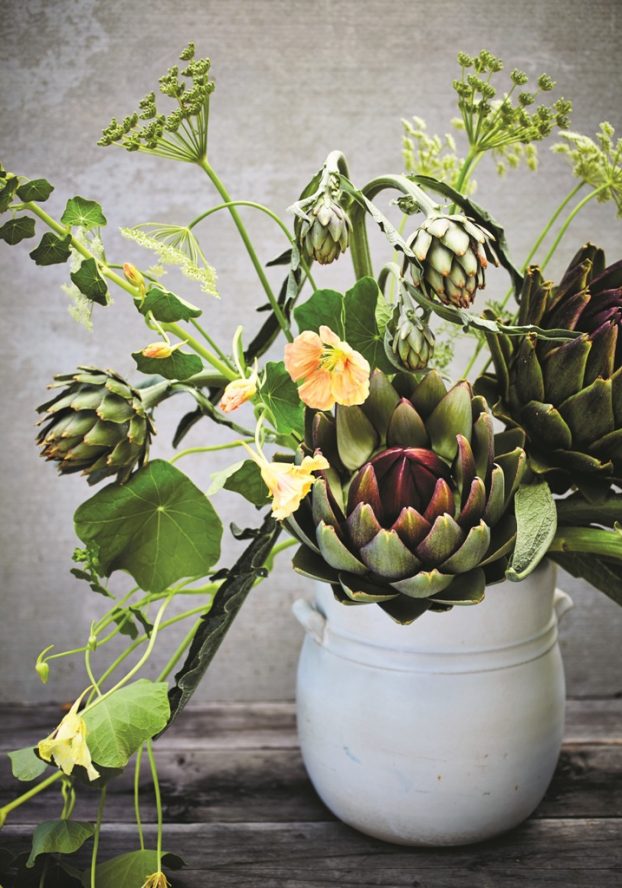
Artichoke arrangement from Harvest
Instructions for the Artichoke Arrangement:
Artichokes are a favorite edible, but few know that their layers of prickly leaves can also be used to create a beautiful focal point in a mixed garden bouquet. Bring inside in a few cuttings from the garden to make a stylish and simple composition.
2 large artichoke heads, stems and leaves attached
1 or 2 stems with several small artichokes attached
5 to 8 stems wild carrot flowers (Daucus carota), 12 to 18 inches (30 to 46 cm) long
2 nasturtium vines with flowers, each 12 to 18 inches (30 to 46 cm) long
Fill a large crock or vase with clean, cold water. Remove any damaged leaves from the stems or leaves that would fall below the water line. Add the large artichoke heads in the front of the crock, with one head resting slightly higher than the other. This creates a focal point and showcases the gorgeous multilayered leaves.
Add in the smaller artichoke stems to the back and left sides of the crock. These heads should sit taller than the larger heads. They add height to the arrangement and create an asymmetrical look. Add in some of the wild carrot stems to fill in the space between the larger and smaller artichokes. These stems should be slightly taller than the small artichoke stems. Place the remaining carrot stems on the back right side of the crock to complement the wild carrot on the left and provide an airy backdrop to the arrangement.
Add the longest nasturtium vine to the front side of the crock, to the left of the large artichokes, so that it drapes over the side of the crock. This creates movement and softens the edge of the vessel. Use the other nasturtium vine to fill any gaps. Make sure that the flower heads are turned to be visible from the front of the arrangement.
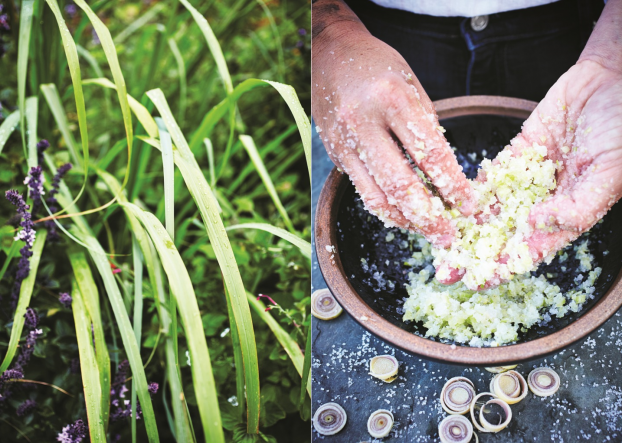
Lemongrass Salt Scrub
Instructions for LEMONGRASS SALT SCRUB
Lemongrass has antibacterial, antioxidant, and other therapeutic properties. After a hard day working in the garden, we appreciate lemongrass as a remedy for our aches and pains. Use this salt scrub on your hands daily or on sore muscles once a week while taking a deep soak in the tub. If you have very sensitive skin, you may want to use the salt scrub only on your hands or substitute brown sugar for the salt as a milder alternative.
MAKES ABOUT 1½ CUPS
1 or 2 fresh stalks lemongrass
1 cup sea salt
½ cup almond or olive oil
Finely chop the lemongrass by hand or in a food processor. Combine the chopped lemongrass, salt, and oil in a bowl and mix with a wooden spoon—or even better, use your hands. The texture should be moist enough to hold together but not overly oily. (If it does get too oily, add a pinch more salt.) Scoop the scrub into a 12-to 16-ounce jar and seal with a lid. Use within 2 weeks.
To use, simply spoon a small amount into your hands, gently rub it in, and then rinse your hands with warm water.
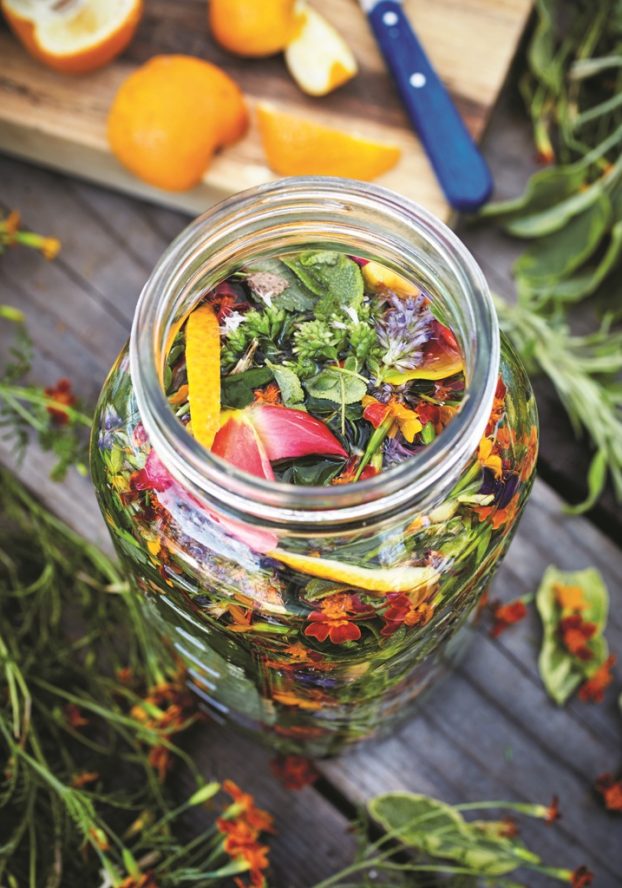
Marigold Bitters
Instructions for Marigold Bitters (AMARO)
Amaro is an Italian herb-infused bitter liqueur, originally used as an after-dinner digestif, chilled or over ice. Recently, however, there’s been a bitters revival, with cocktail enthusiasts mixing the bittersweet digestif into beverages beyond just classic cocktails such as the Manhattan and the old fashioned.
Gem marigolds are a perfect component because of their distinct bitter flavor and for the lovely amber hue that results. For amaro’s signature tartness, we’ve added some chinotto orange rind, the key ingredient in Campari, the popular Italian herbal aperitif.
MAKES 1 QUART
Enough herbs and edible flowers to fill a 1-quart jar, for example:
- 1 cup gem marigold flowers and leaves
- 1 to 3 sage leaves
- 2 to 6 anise hyssop flowers and leaves
- 1 sprig rosemary
- 1 to 6 lavender blooms
- Small bunch of thyme (such as French, English, or lemon)
- 1 to 6 calendula flowers
- 1 to 6 bee balm flowers and leaves
- Small handful of rose petals
- 1 to 8 viola petals
5 to 10 alpine strawberries or other berries
Rind of 2 chinotto oranges
2 (750-ml) bottles Hangar One Vodka or a similar good-quality, unflavored vodka
SIMPLE SYRUP
MAKES ABOUT 1-1⁄4 CUPS
1 cup water
1 cup organic sugar
Gently rinse the herbs and flowers, leaving the blooms intact to capture the bitter attributes of their centers. Add them all, along with the berries and citrus rind, to a 1-quart jar. Fill the jar with vodka to just below the rim (you might not need it all) and seal with a tight-fitting lid. Store it in a cool, dark place.
Check the amaro daily or every couple of days, and give it a good shake to ensure that there are no floating leaves or flowers. After 4 weeks, taste the amaro. If you prefer it stronger, allow it to infuse for another week or so. Once you’ve achieved the flavor you like, strain out the herbs, edible flowers, berries, and rind.
Next, make the simple syrup. Combine the sugar and water in a nonreactive pan. Place over medium-high heat and bring to a simmer, stirring to prevent sticking. Once the sugar has dissolved (about 5 minutes), remove the mixture from the heat and let it cool slightly.
Add 1 cup of the simple syrup to the strained amaro liquid and let infuse for an additional 2 weeks, then taste. If you find the amaro more bitter than you’d like, add more simple syrup but remember the sweetener is meant to take the edge off of the bitter taste rather than mask it. Once the bitters are to your liking, store indefinitely.
 The Slow Flowers Podcast has been downloaded more than 170,000 times by listeners like you.
The Slow Flowers Podcast has been downloaded more than 170,000 times by listeners like you.
THANK YOU to each one of you for downloading, listening, commenting and sharing. It means so much.
If you value the content you receive each week, I invite you to show your thanks and support the Slow Flowers Podcast with a donation — the button can be found on our home page in the right column.
 Your contributions will help make it possible to transcribe future episodes of the Podcast.
Your contributions will help make it possible to transcribe future episodes of the Podcast.
Thank you to our lead sponsor for 2017: Certified American Grown Flowers. The Certified American-Grown program and label provide a guarantee for designers and consumers on the source of their flowers. Take pride in your flowers and buy with confidence, ask for Certified American Grown Flowers. To learn more visit americangrownflowers.org.
We’re also grateful for support from Arctic Alaska Peonies, a cooperative of 50 family farms in the heart of Alaska providing high quality, American Grown peony flowers during the months of July and August. Visit them today at arcticalaskapeonies.com
And welcome to our newest sponsor, the Seattle Wholesale Growers Market, a farmer-owned cooperative committed to providing the very best the Pacific Northwest has to offer in cut flowers, foliage and plants. The Growers Market’s mission is to foster a vibrant marketplace that sustains local flower farms and provides top-quality products and service to the local floral industry. Find them at seattlewholesalegrowersmarket.com.
Longfield Gardens has returned as a 2017 sponsor, and we couldn’t be happier to share their resources with you. Longfield Gardens provides home gardeners with high quality flower bulbs and perennials. Their online store offers plants for every region and every season, from tulips and daffodils to dahlias, caladiums and amaryllis. Visit them at lfgardens.com.
And finally, thank you Association of Specialty Cut Flower Growers. Formed in 1988, ASCFG was created to educate, unite, and support commercial cut flower growers. It mission is to help growers produce high-quality floral material, and to foster and promote the local availability of that product. Learn more at ascfg.org.
I’m Debra Prinzing, host and producer of the Slow Flowers Podcast. Next week, you’re invited to join me in putting more American grown flowers on the table, one vase at a time. And If you like what you hear, please consider logging onto Itunes and posting a listener review.
The content and opinions expressed here are either mine alone or those of my guests alone, independent of any podcast sponsor or other person, company or organization.
The Slow Flowers Podcast is engineered and edited by Andrew Brenlan. Learn more about his work at KineticTreeFitness.com.
Music credits:
Blue Jay; Cottonwoods
by Blue Dot Sessions
Posted in American Grown, Blog Posts, Book reviews, Creativity, Entertainment, floral design, Gardening, General, Landscape Design, Plants, Podcast Episodes, SLOW FLOWERS Podcast, Writing | 7 Comments »
March 15th, 2017
Podcast: Play in new window | Download
Subscribe: Apple Podcasts | Podcast Index | | More
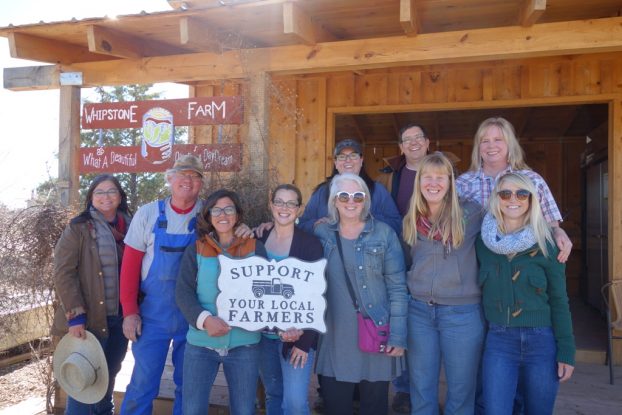
Arizona Grown, folks! From left (front row): Anne, Cory, Shanti, Terri, Debra, Dani & Morgan; (back row): Melissa, Les & Lindsay. We’re posing in front of the Self-Serve farm stand at Whipstone.
UPDATE: If you want to learn more about the once-vibrant history of Arizona’s cut flower farming community, read this January 2016 article by Kathy Nakagawa that appeared in the Arizona Republic, “When Phoenix Bloomed.”
I’ve had Arizona on my mind quite a bit lately and it’s not only because Seattle, like most of the rest of the country, has been cold, wet and dreary for months. So when my travels brought me to Scottsdale, Phoenix and Mesa for family reasons, I followed through on my promise to myself to visit a flower farm.
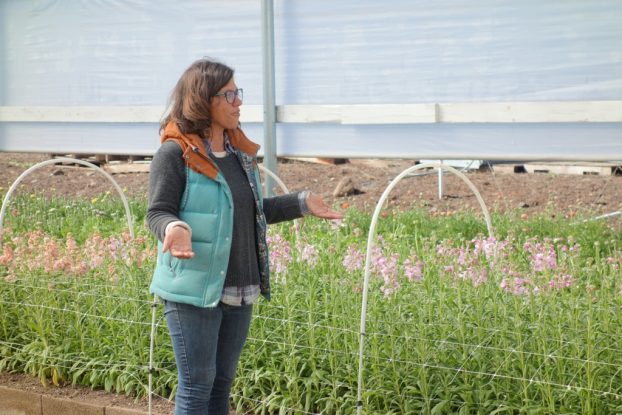
Shanti led us on a tour of Whipstone Farm, including this pristine high tunnel where stock and ranunculus were blooming.
Lucky for me, I’ve been collecting Slow Flowers friends in Arizona. We all agreed to meet at Whipstone Farm in Paulden, where Shanti and Cory Rade and theor family grow CSA food crops AND lots of flowers. The farm is a Slowflowers.com member and I was so happy to visit there on March 1st, along with a diverse and super passionate cadre for our informal Slow Flowers Arizona meet-up.
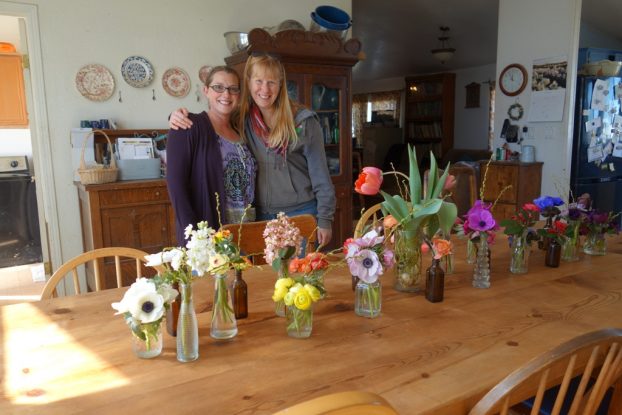
Terry and Dani, two of Whipstone’s floral team members, pictured inside Shanti and Cory’s kitchen.
They included Terri Schuett of Happy Vine Flowers, a freelance floral designer and horticulture student-turned-flower farm intern at Whipstone Farm, and Dani Baker, Whipstone Farm’s flower manager. It was fun to reunite with all three of them having met in the past.
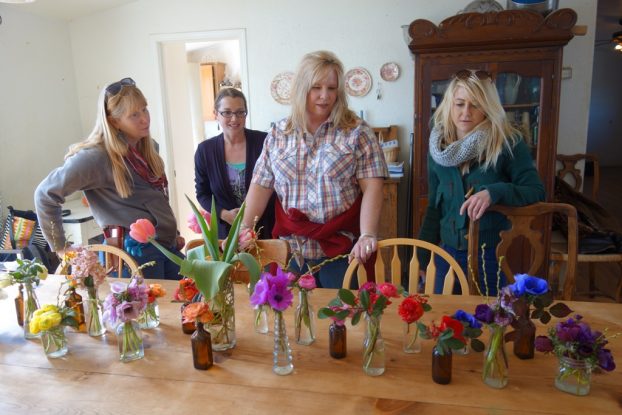
Dani, Terri, Lindsay and Morgan evaluate the Whipstone stems, arranged by Terri for our luncheon centerpiece
The drive from Scottsdale to Paulden takes you sort of in the northbound direction toward Flagstaff and then at some point you head west toward Chino Valley. It’s pretty remote and pretty beautiful. Who would think that agriculture lives here?
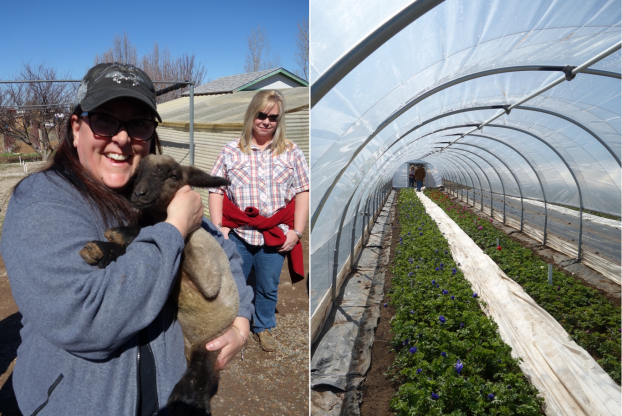
Melissa Saltzman found herself a baby lamb (named “Fern”) while Lindsay looks on; right – anemones in the high tunnel.
My fabulous driving companions included Anne E., a Scottsdale micro flower farmer who specializes in garden roses, herbs and citrus, among other things at Tre Soli (who I first met, by the way, when she attended a Field to Vase Dinner in Carlsbad, CA in 2015), and Morgan Anderson of the.flori.culture, based in Scottsdale, who you heard on this podcast last year when she was finishing up her PhD in Floral Design/Floriculture at Texas A&M. Morgan and I hopped into Anne’s car and the 120 miles passed quickly while we gabbed away about all things floral.
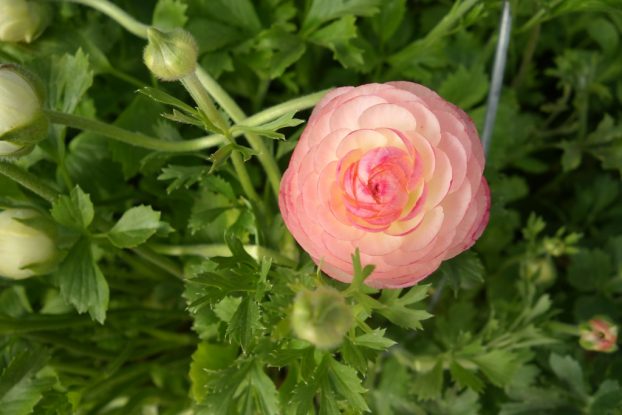
yes, yes, and YES!
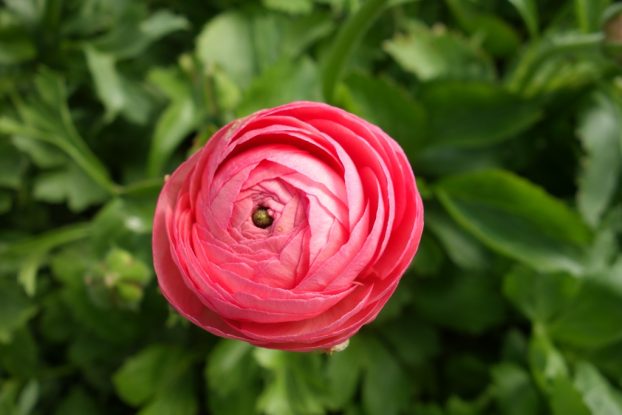
You just can’t get enough of these stunning Ranunculus!
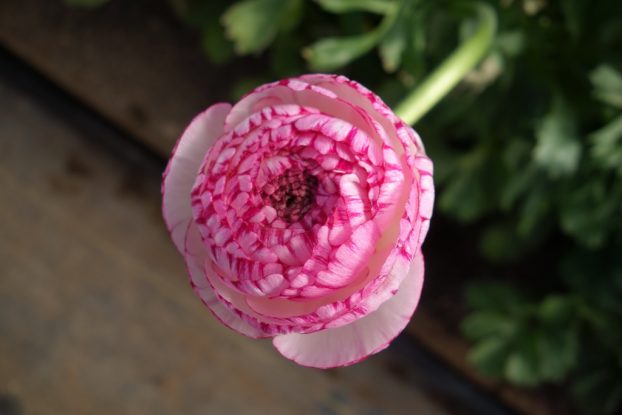
Check out the petal count!
Others who met us at Whipstone included Lindsay Statler of Green Creek Gardens in Dewey, Arizona, a Slow Flowers member whose farm is about 30 miles away from Whipstone, and Melissa & Les Saltzman, friends and flower farmers I’ve met through the Alaska Peony Growers Association because – yes – they live in Scottsdale, Arizona and own a peony farm called Alaskan Legacy Peonies, in Homer (talk about a commute!) I wanted them to meet and learn from flower farmers in their home state where the conditions are probably 180 degrees opposite from Alaska’s peony fields.
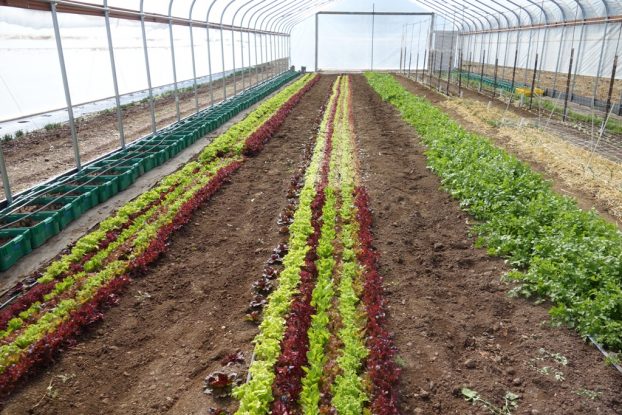
Leafy greens for the winter Farmers’ Market.
When we arrived, Shanti took us on a wonderful walking tour of Whipstone Farm before lunch. She told us the story of how the farm got started, so I’ll let you listen to the interview to hear more. With 15 acres and more than 100 varieties of vegetables and cut flowers, Shanti and Cory have made a life for themselves, their four children and countless CSA customers who buy shares each year.
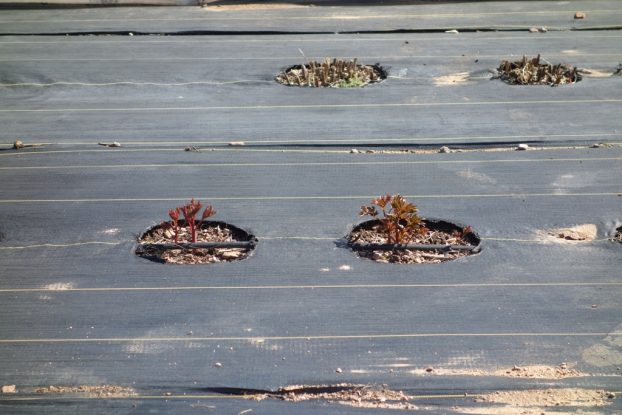
The promise of spring peonies.
As they write on the Whipstone Farm web site: “We farm with our heart and health in mind. We do not use any synthetic fertilizer or chemical pesticides. We enjoy growing food for our community not only as a means of providing healthy sustenance, but also as a way to bring people together. We welcome you to come out and see our farm, to learn about where your food comes from and meet the folks who grow it.”
You can find their produce and flowers every week at the Prescott, Flagstaff and Chino Valley Farmers Markets. Whipstone also has an on-farm self-serve stand where friends, customers and neighbors purchase products on the honor system. The farm stand is open year round and customers are welcome to stop in during daylight hours – no doors, so it’s always open. Quick, self-guided farm tours often occur when people come to buy veggies and flowers.
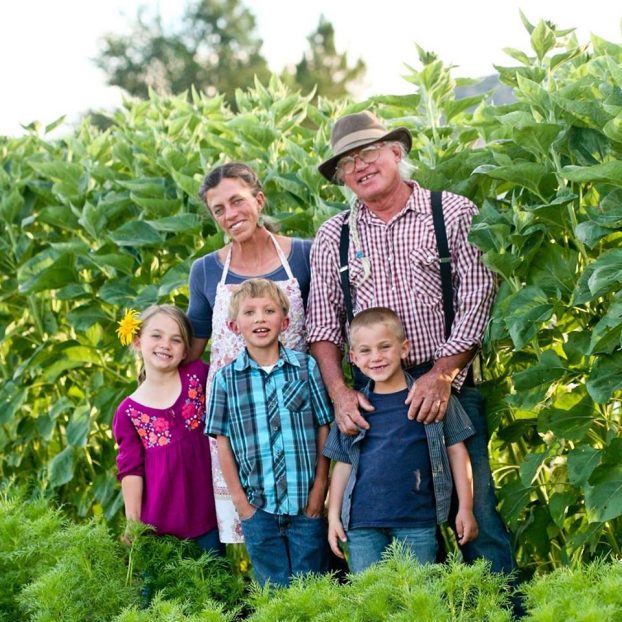
Shanti and Cory with three of their four children.
Shanti came into farming by chance through a high school internship and after working on several different farms around the country, she returned to school for a degree in Agroecology from Prescott College. At Whipstone, she oversees crop planning, seed starting and everything to do with flowers. She also handles office management and marketing, even though it’s not always her favorite part about farming.
Cory is a self-taught farmer, learned through lots of trial and error and even more determination. What he really loves about farming is food and how it brings people together; growing the food is the first step in making that happen. The resident repair man on the farm, Cory is busy, since something seems to break on the farm almost every day. But, he says “getting to eat the chiles I grow makes it all worth it.”
After our wonderful farm tour, we gathered around Shanti and Cory’s kitchen table, a long, wooden trestle-style table with room for everyone, which I’m sure they need when the entire family is together. Anne served us a delicious homemade meal of lentil soup, salad, veggies, breads, spreads and Arizona-made wine. Thank you, Anne, for being our wonderful caterer!
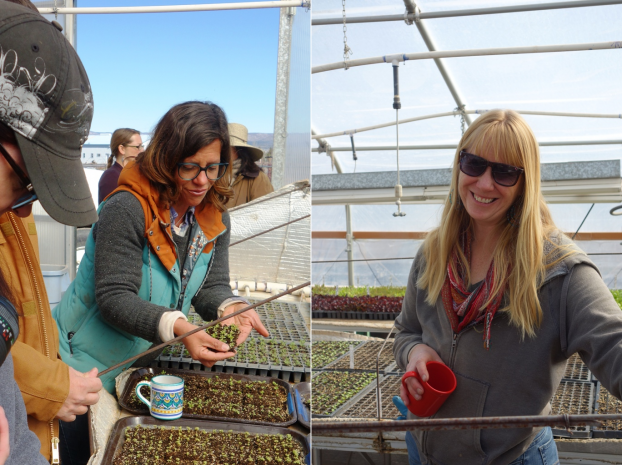
Shanti (left) and Dani (right)
I know you will enjoy this interview I recorded with Shanti, and you’ll also hear bonus audio, recorded when Terri Schuett took us on a quick tour of the horticulture and agribusiness program at Yavapai College in Chino Valley. She has definitely been smitten with the flower-growing bug, a path I see more and more florists taking as they become curious about the flowers they design with. Even though our conversation is brief, you’ll learn a thing or two about aquaculture and floriculture in the desert, of all places!
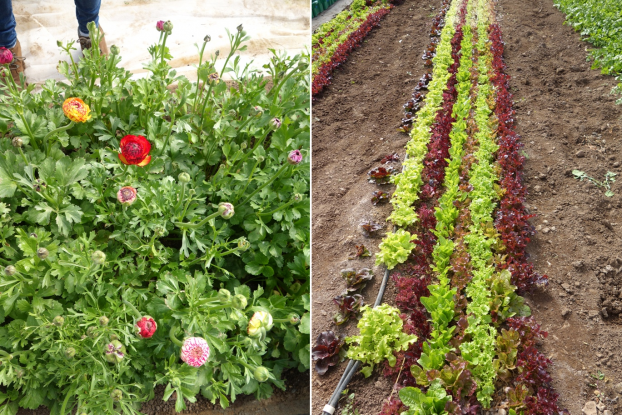
Flowers and Food — Arizona-grown!
Here’s how to find and follow these intrepid Arizona Slow Flowers Folks!
Find Whipstone Farm on Facebook
Follow Whipstone Farm on Instagram
See Whipstone Farm on Pinterest
Discover Whipstone Farm on Twitter
Find Terri Schuett/Happy Vine Flowers on Instagram
Find Dani Baker on Instagram
Find Anne on Instagram
Find Morgan Anderson on Instagram
Find Lindsay Statler on Instagram
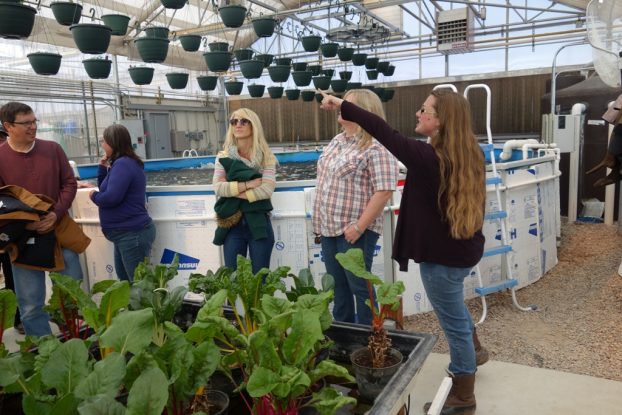
Terri led us on a second tour of the ag program at Yavapai College in Chico Valley, not far from Whipstone. She’s studying horticulture there.
 The Slow Flowers Podcast has been downloaded more than 168,000 times by listeners like you.
The Slow Flowers Podcast has been downloaded more than 168,000 times by listeners like you.
THANK YOU to each one of you for downloading, listening, commenting and sharing. It means so much.
If you value the content you receive each week, I invite you to show your thanks and support the Slow Flowers Podcast with a donation — the button can be found on our home page in the right column.
Your contributions will help make it possible to transcribe future episodes of the Podcast.
 Thank you to our lead sponsor for 2017: Certified American Grown Flowers. The Certified American-Grown program and label provide a guarantee for designers and consumers on the source of their flowers. Take pride in your flowers and buy with confidence, ask for Certified American Grown Flowers. To learn more visit americangrownflowers.org.
Thank you to our lead sponsor for 2017: Certified American Grown Flowers. The Certified American-Grown program and label provide a guarantee for designers and consumers on the source of their flowers. Take pride in your flowers and buy with confidence, ask for Certified American Grown Flowers. To learn more visit americangrownflowers.org.
We’re also grateful for support from Arctic Alaska Peonies, a cooperative of 50 family farms in the heart of Alaska providing high quality, American Grown peony flowers during the months of July and August. Visit them today at arcticalaskapeonies.com
And welcome to our newest sponsor, the Seattle Wholesale Growers Market, a farmer-owned cooperative committed to providing the very best the Pacific Northwest has to offer in cut flowers, foliage and plants. The Growers Market’s mission is to foster a vibrant marketplace that sustains local flower farms and provides top-quality products and service to the local floral industry. Find them at seattlewholesalegrowersmarket.com.
Longfield Gardens has returned as a 2017 sponsor, and we couldn’t be happier to share their resources with you. Longfield Gardens provides home gardeners with high quality flower bulbs and perennials. Their online store offers plants for every region and every season, from tulips and daffodils to dahlias, caladiums and amaryllis. Visit them at lfgardens.com.
And finally, thank you Association of Specialty Cut Flower Growers. Formed in 1988, ASCFG was created to educate, unite, and support commercial cut flower growers. It mission is to help growers produce high-quality floral material, and to foster and promote the local availability of that product. Learn more at ascfg.org
I’m Debra Prinzing, host and producer of the Slow Flowers Podcast. Next week, you’re invited to join me in putting more American grown flowers on the table, one vase at a time. And If you like what you hear, please consider logging onto Itunes and posting a listener review.
The content and opinions expressed here are either mine alone or those of my guests alone, independent of any podcast sponsor or other person, company or organization.
The Slow Flowers Podcast is engineered and edited by Andrew Brenlan. Learn more about his work at KineticTreeFitness.com.
Posted in American Grown, Blog Posts, Creativity, floral design, Flower Farming, Gardening, General, Plants, Podcast Episodes, SLOW FLOWERS Podcast, Slowflowers.com the Directory of American Flowers, Storytelling | 3 Comments »
© Debra Prinzing, all written and photographic content. Website design/development by Willo Bellwood/Metric Media
 Before we get started, I want to share some very important news — especially for all the U.S. flower farmers listening. Every five years the USDA – that’s the US Department of Agriculture – conducts a Census, a complete count of farms and ranches, and the people who operate them, all across the country.
Before we get started, I want to share some very important news — especially for all the U.S. flower farmers listening. Every five years the USDA – that’s the US Department of Agriculture – conducts a Census, a complete count of farms and ranches, and the people who operate them, all across the country. Producers who are new to farming or who did not receive a Census of Agriculture in 2012 still have time to sign up to receive the 2017 form by visiting www.agcensus.usda.gov and clicking on the ‘Make Sure You Are Counted’ button through June. USDA defines a farm as any place from which at least $1,000 of agricultural products were produced and sold, or normally would have been sold, during the census year — and that means unless you’re a hobby grower like me, you should be counted!
Producers who are new to farming or who did not receive a Census of Agriculture in 2012 still have time to sign up to receive the 2017 form by visiting www.agcensus.usda.gov and clicking on the ‘Make Sure You Are Counted’ button through June. USDA defines a farm as any place from which at least $1,000 of agricultural products were produced and sold, or normally would have been sold, during the census year — and that means unless you’re a hobby grower like me, you should be counted!
If you follow Gretchen Hoyt and her husband Ben Craft around for a season, you’ll gain a profound admiration for how their values, sustainable farming practices and sheer hard work produce something so ephemeral and delicate as a lilac, tulip, lily, anemone or peony.


 I’m Debra Prinzing, host and producer of the Slow Flowers Podcast. Next week, you’re invited to join me in putting more American grown flowers on the table, one vase at a time. And If you like what you hear, please consider logging onto Itunes and posting a listener review.
I’m Debra Prinzing, host and producer of the Slow Flowers Podcast. Next week, you’re invited to join me in putting more American grown flowers on the table, one vase at a time. And If you like what you hear, please consider logging onto Itunes and posting a listener review.








